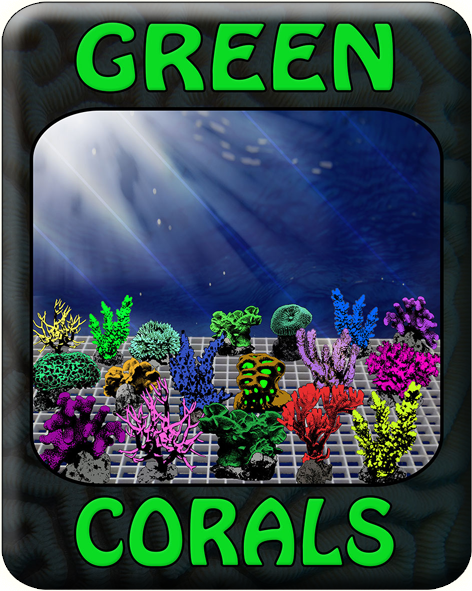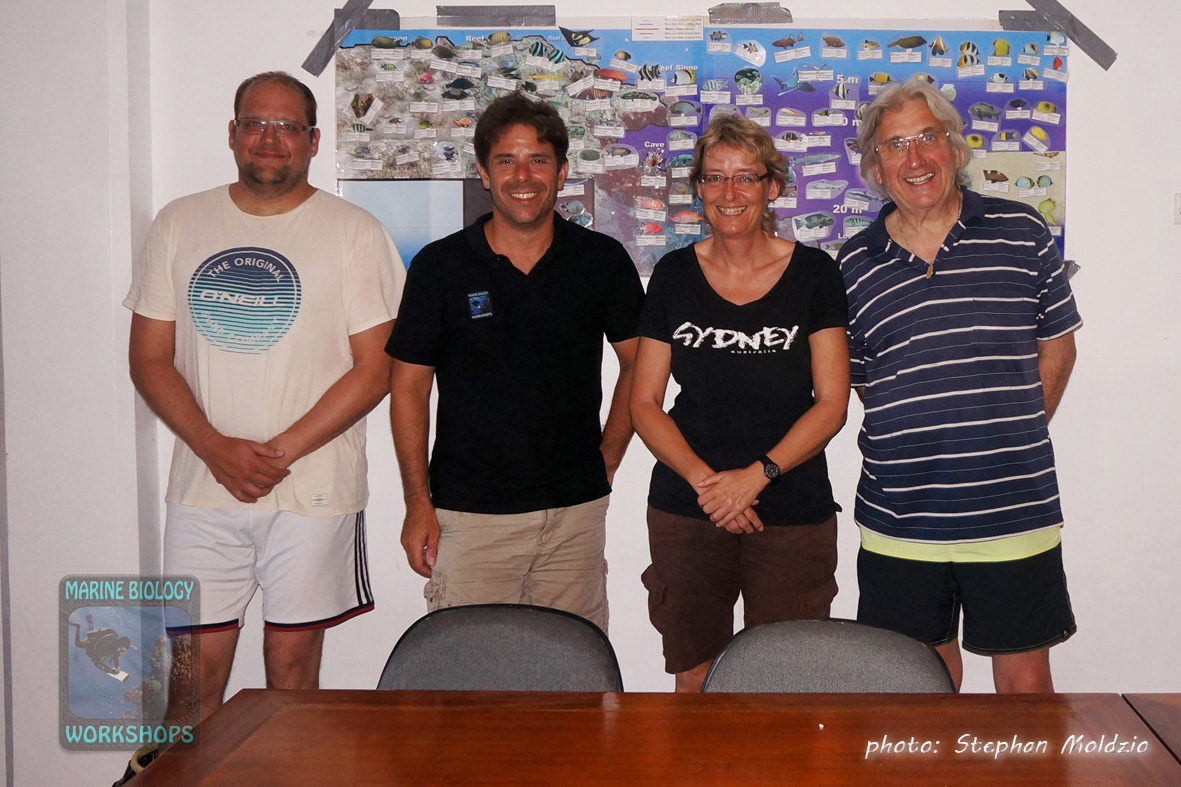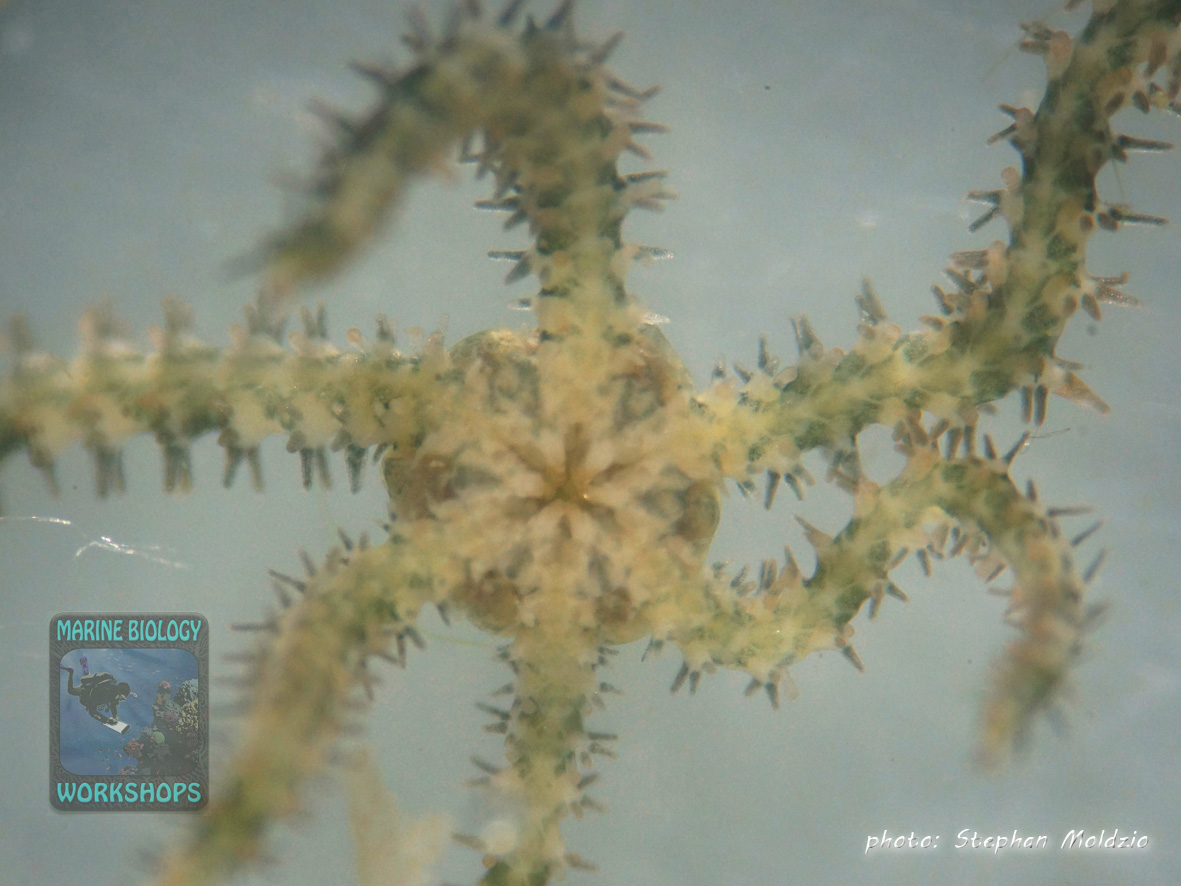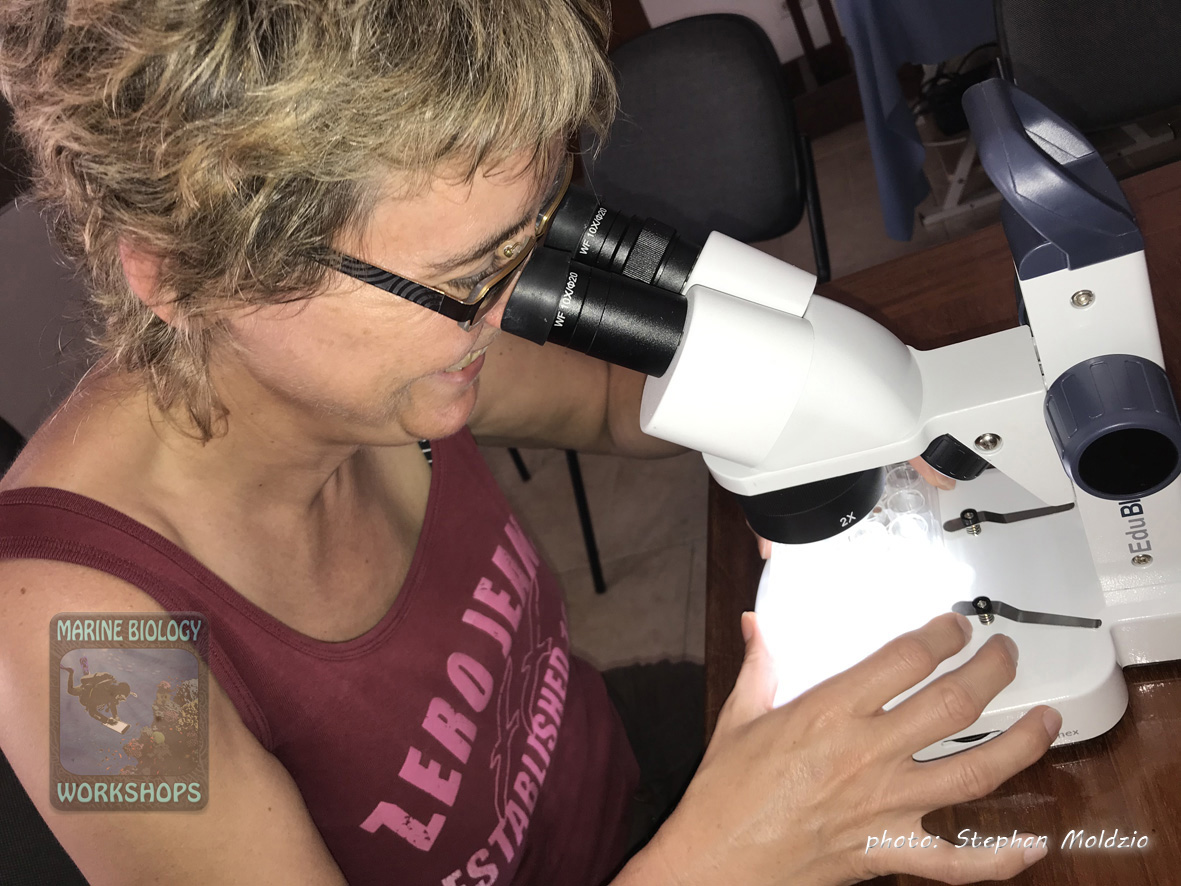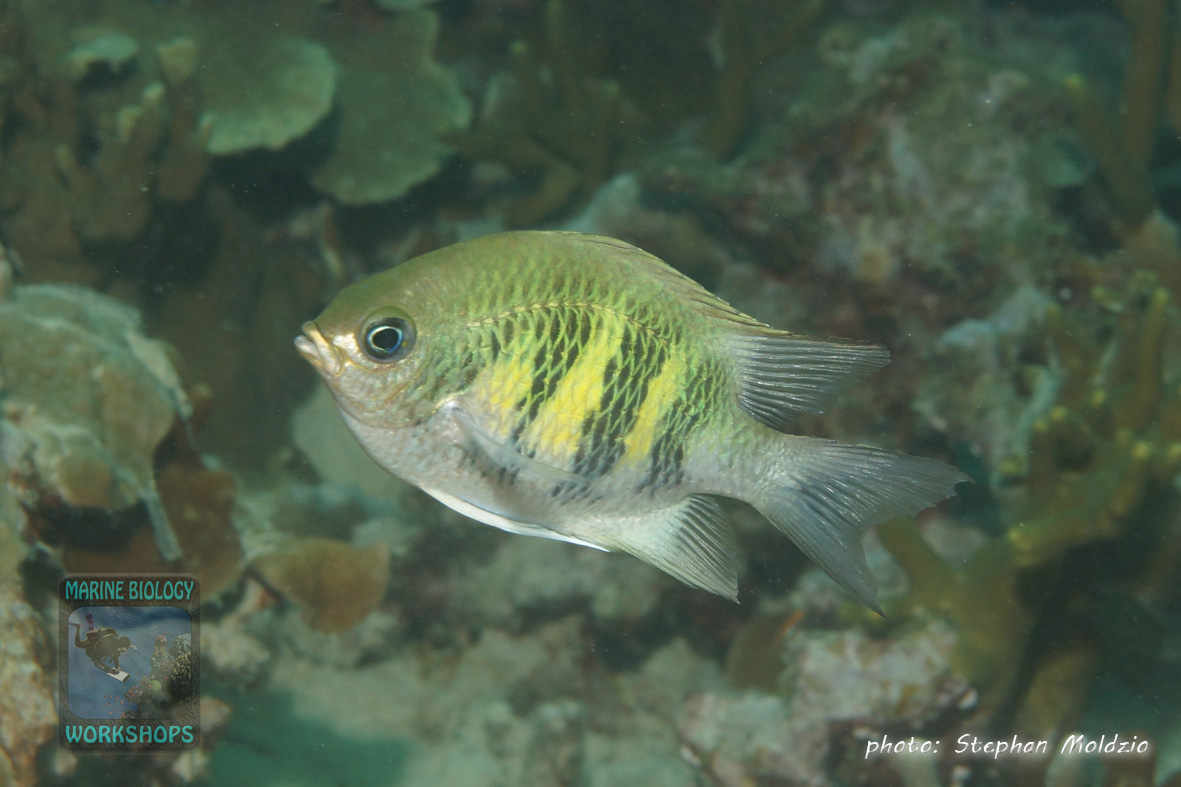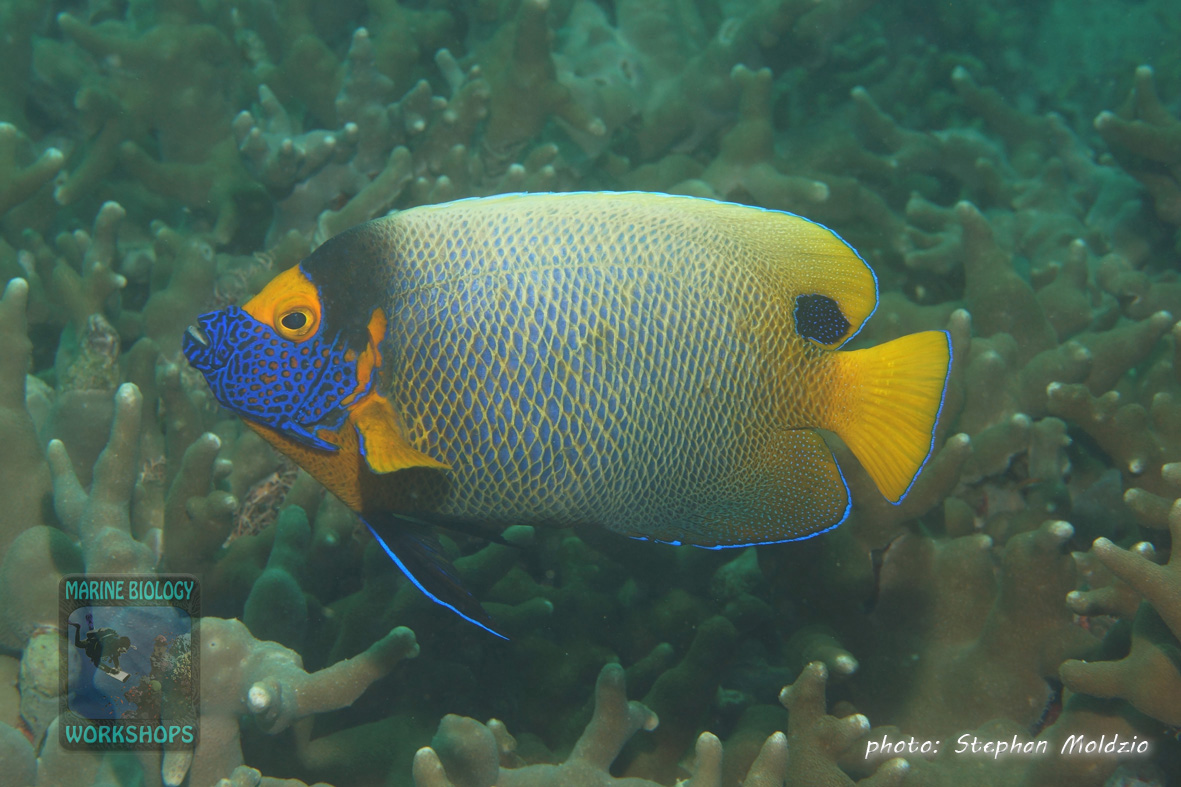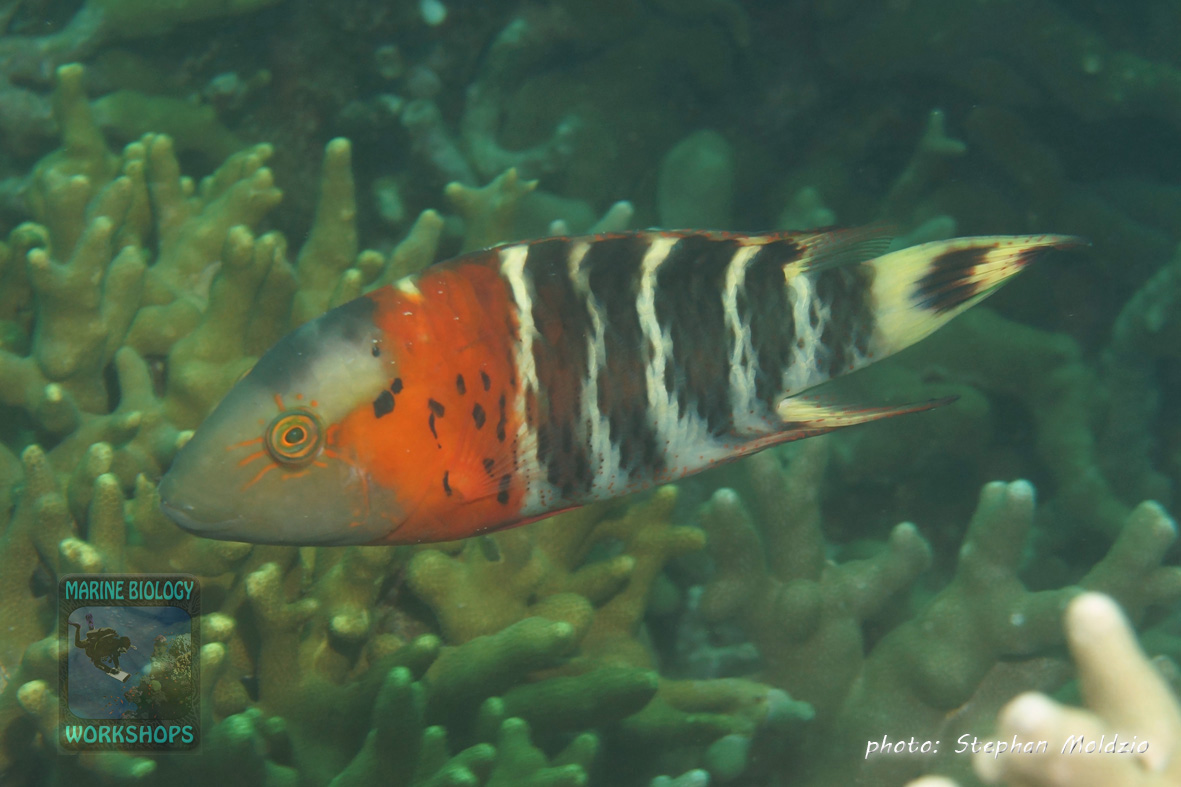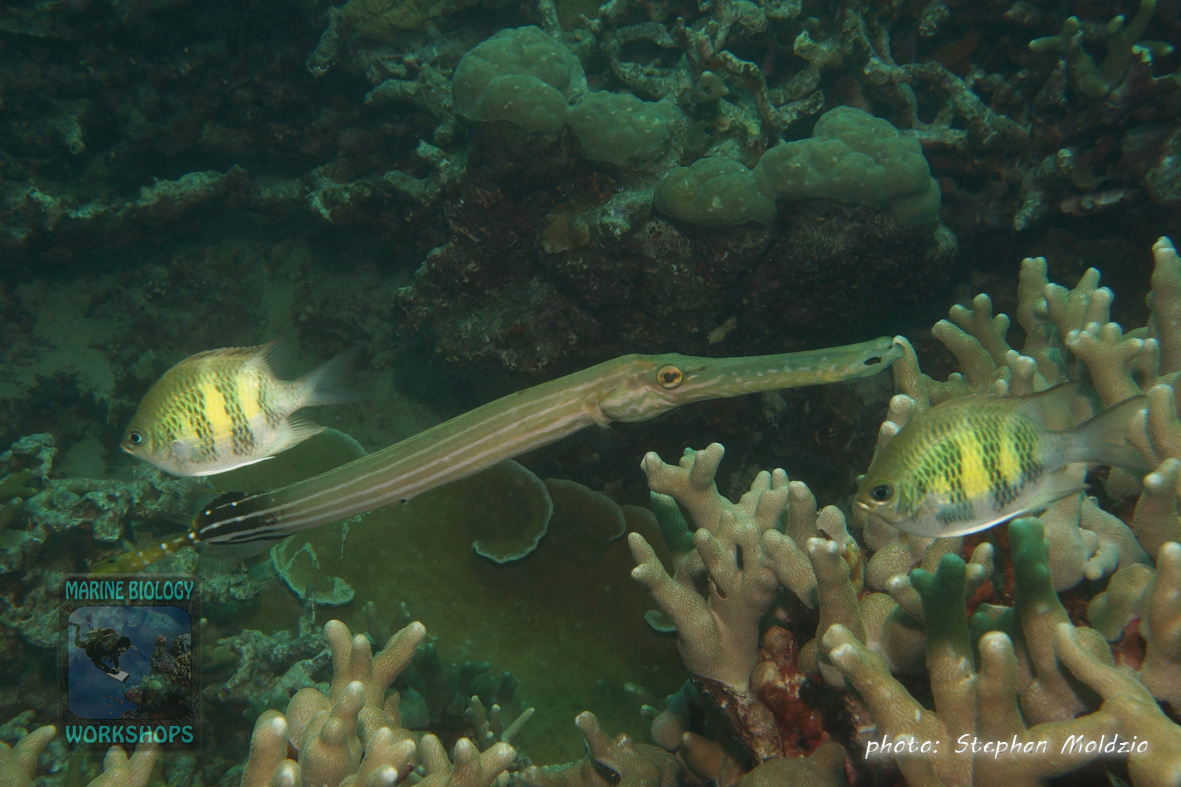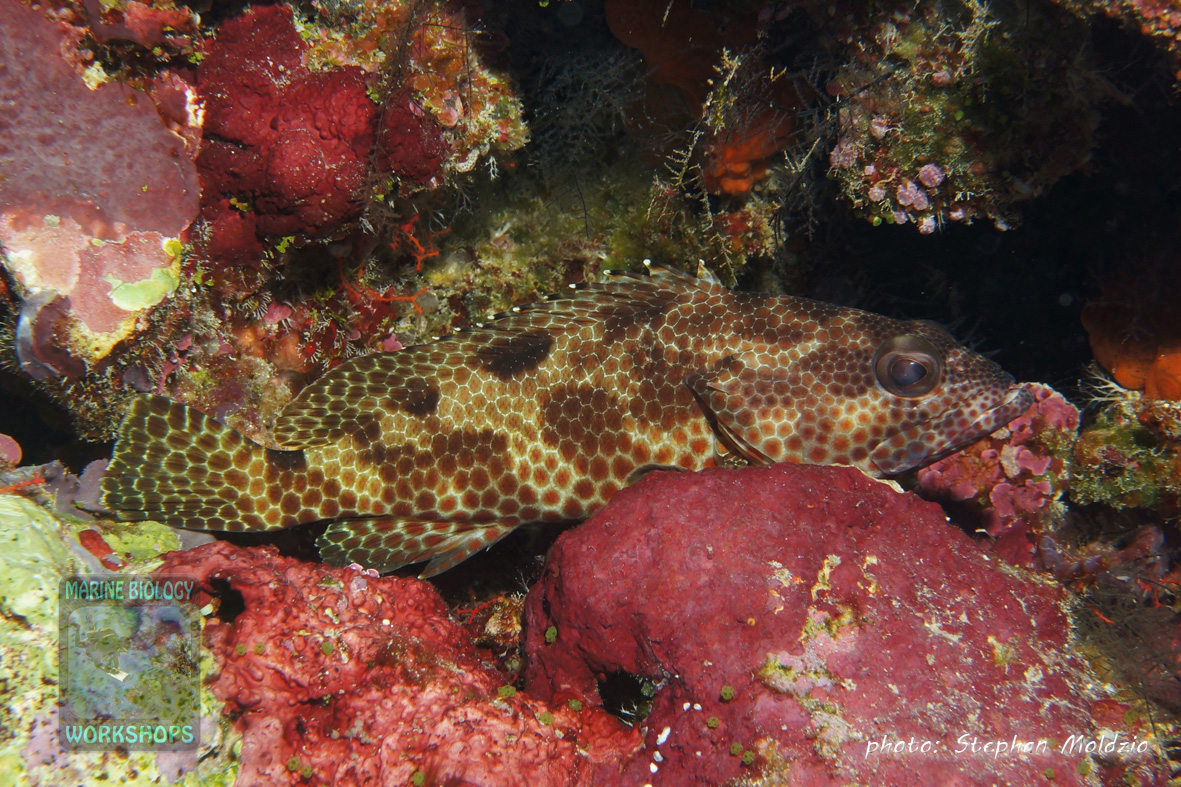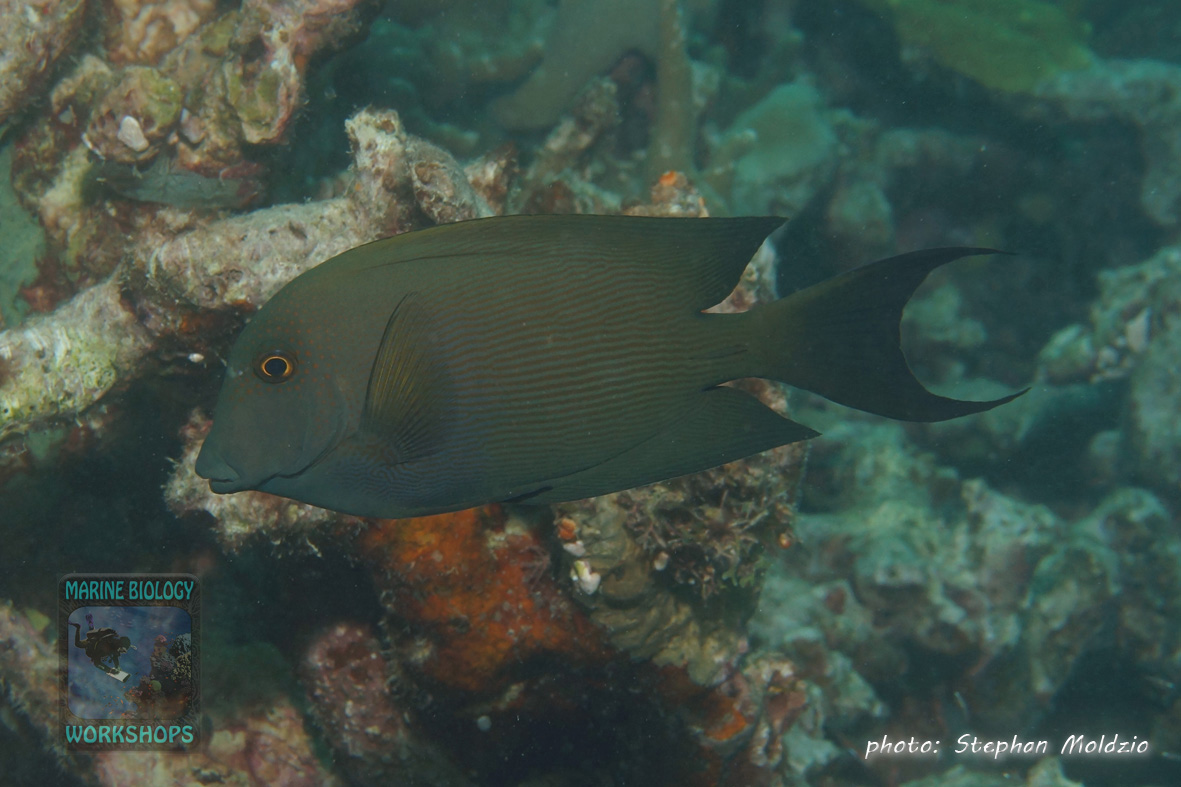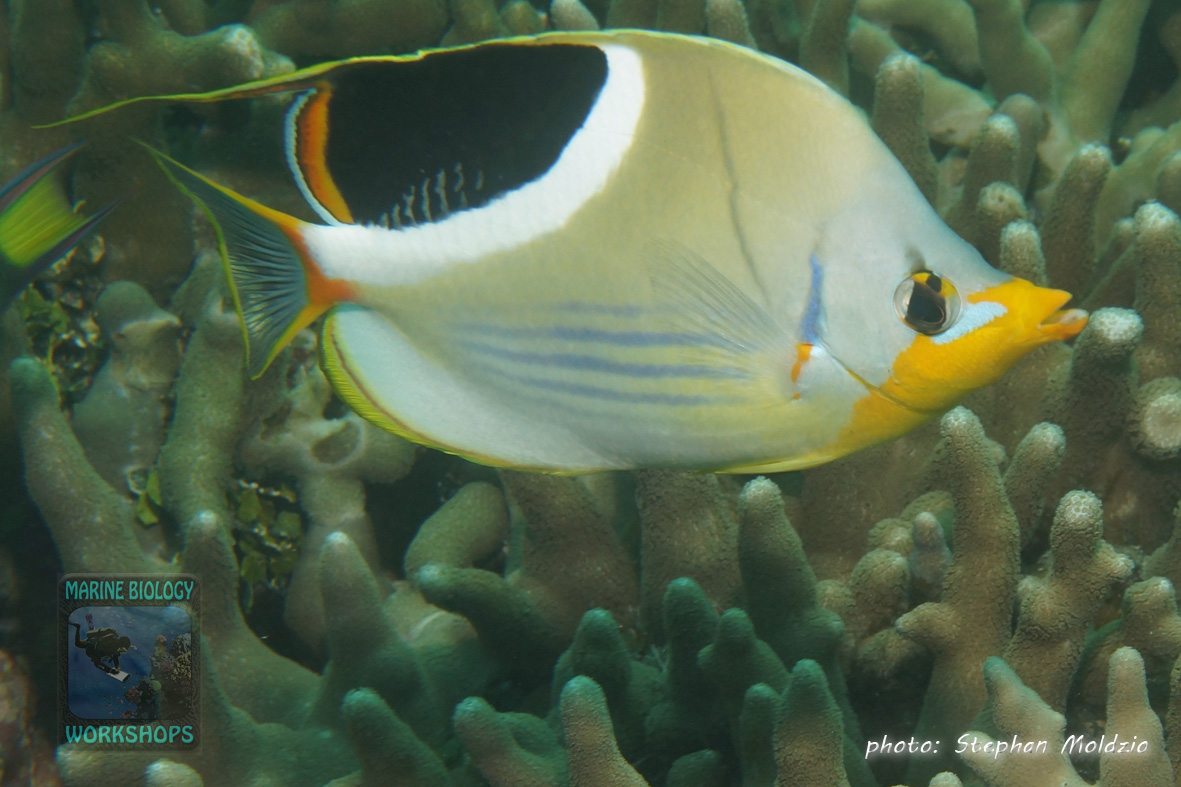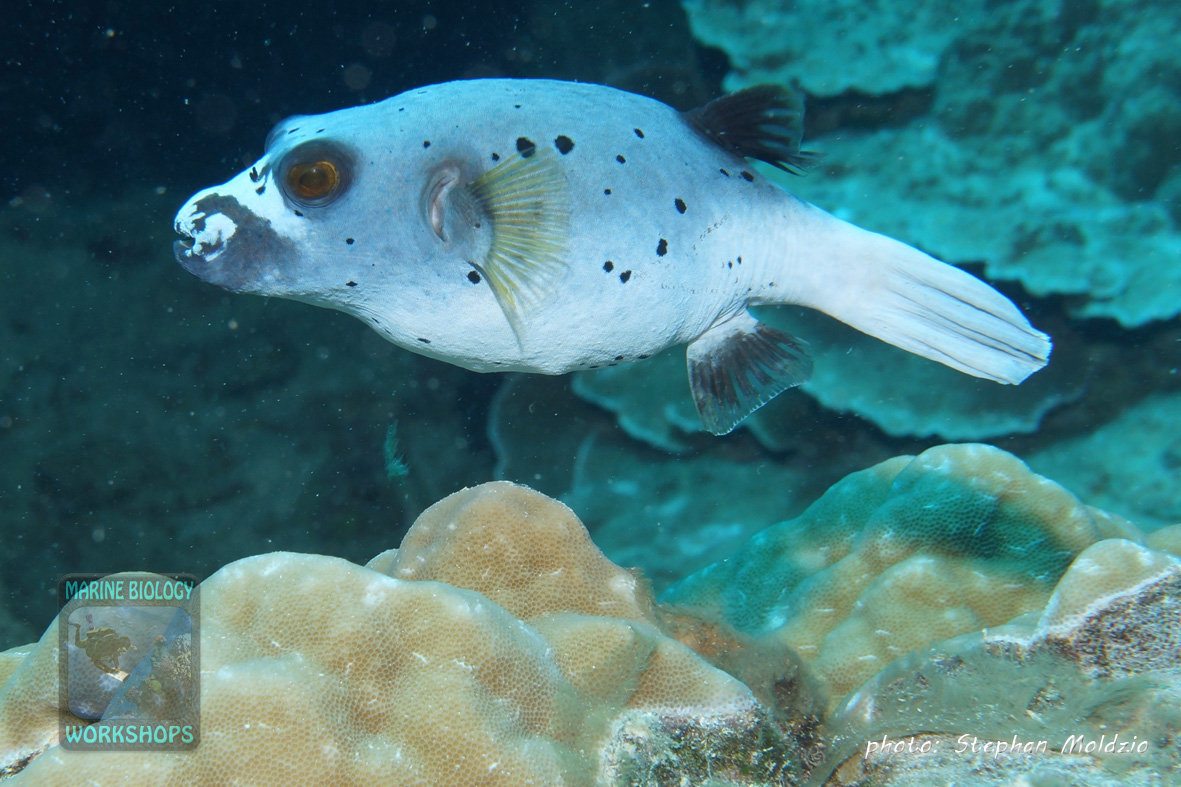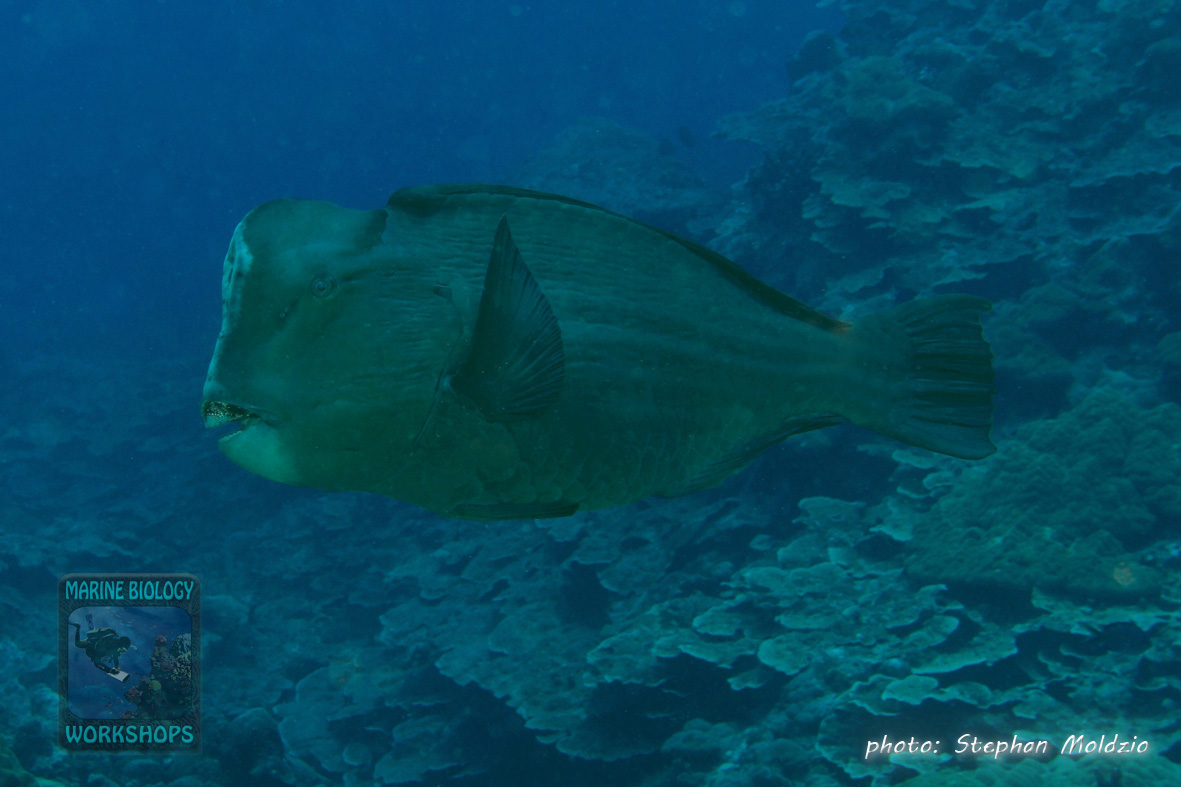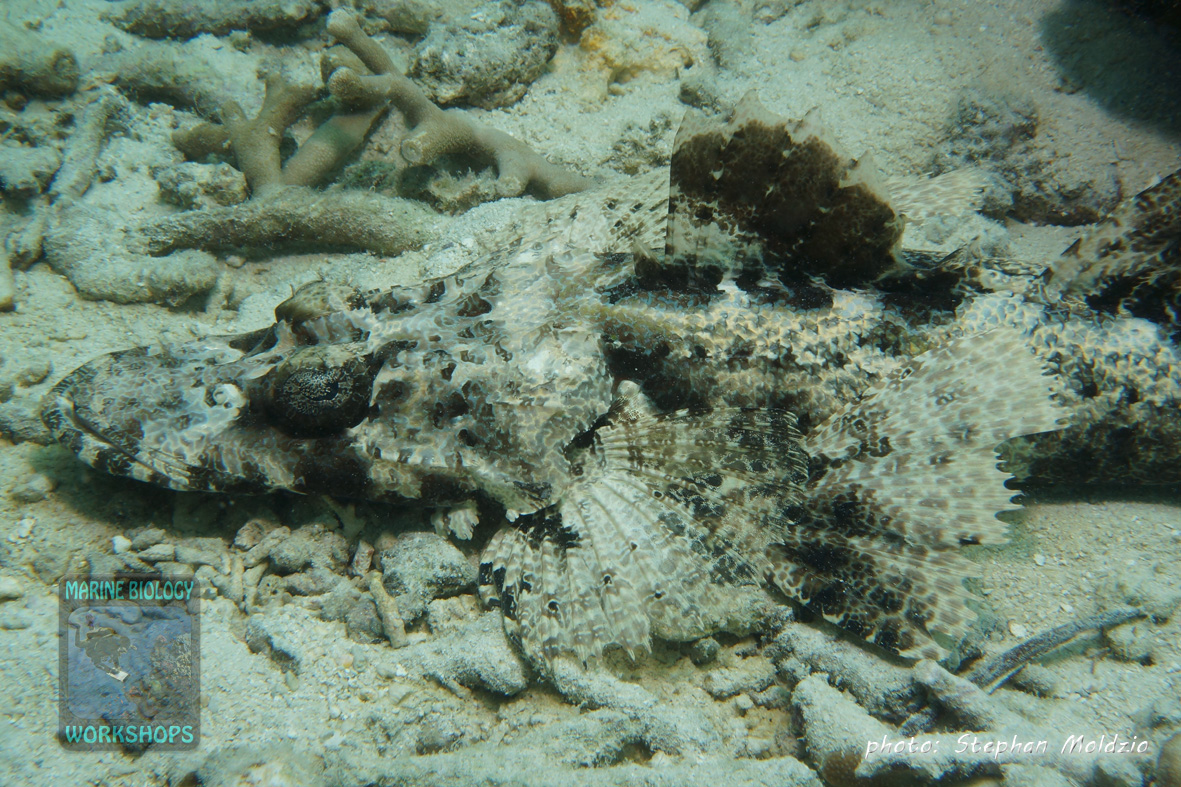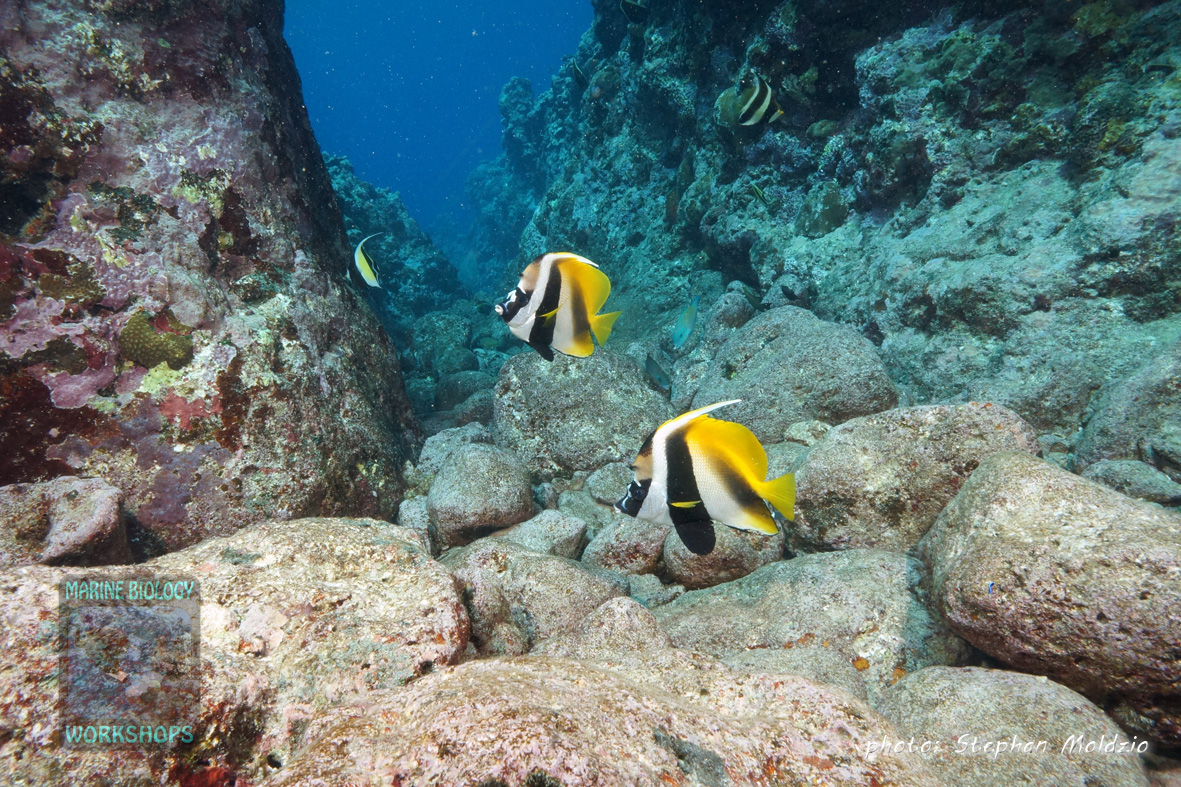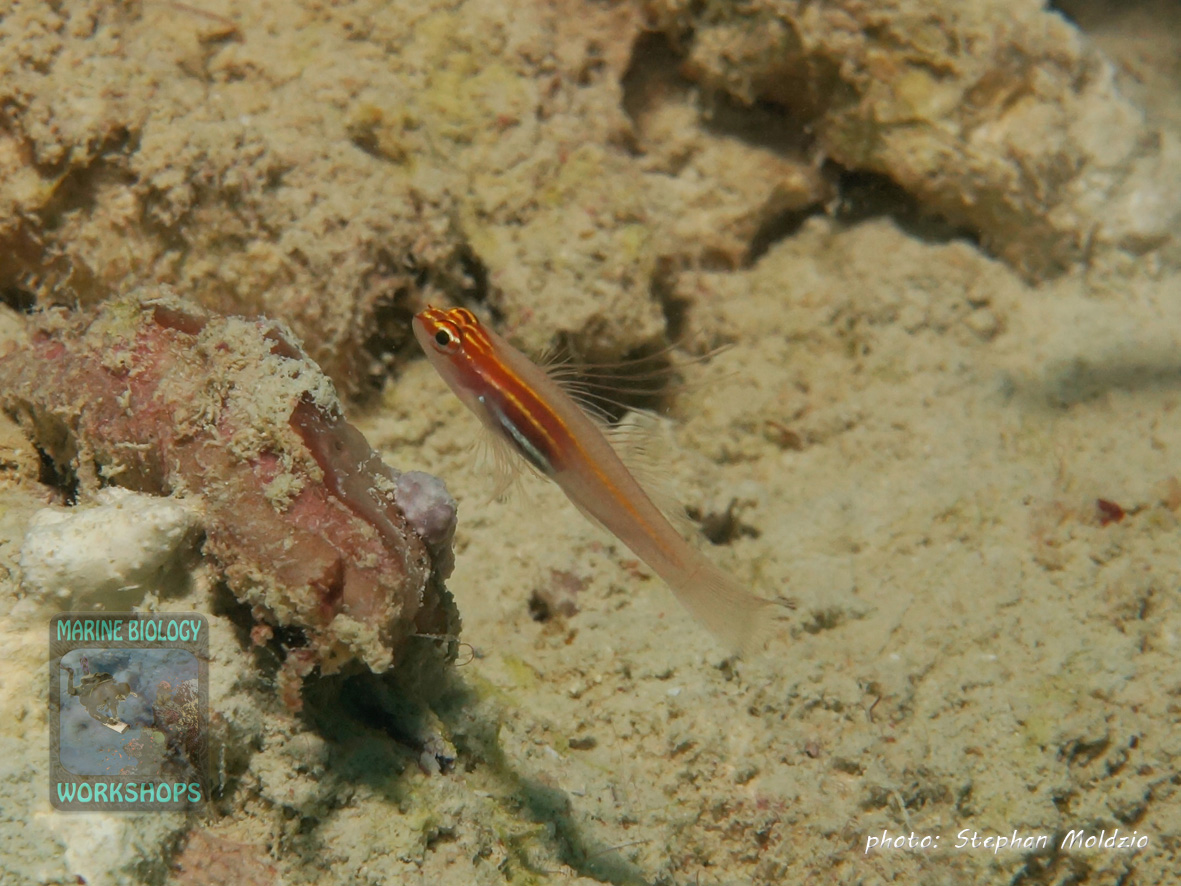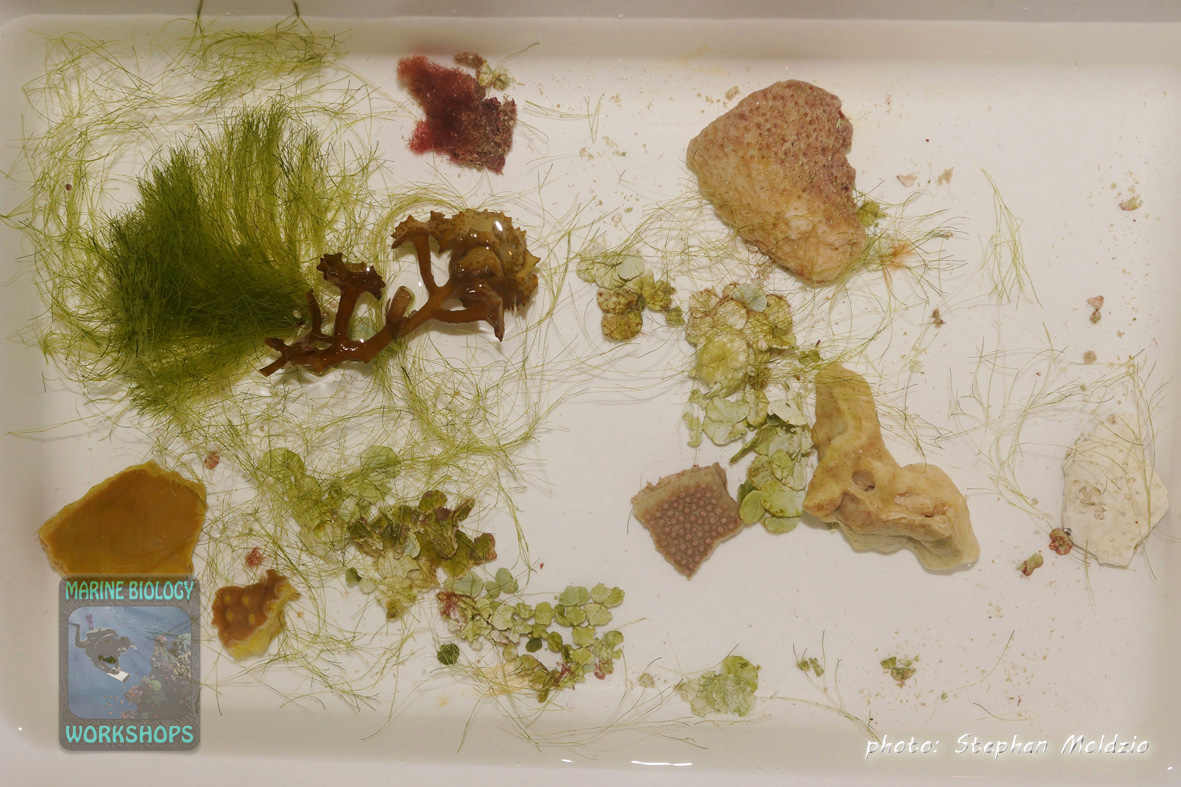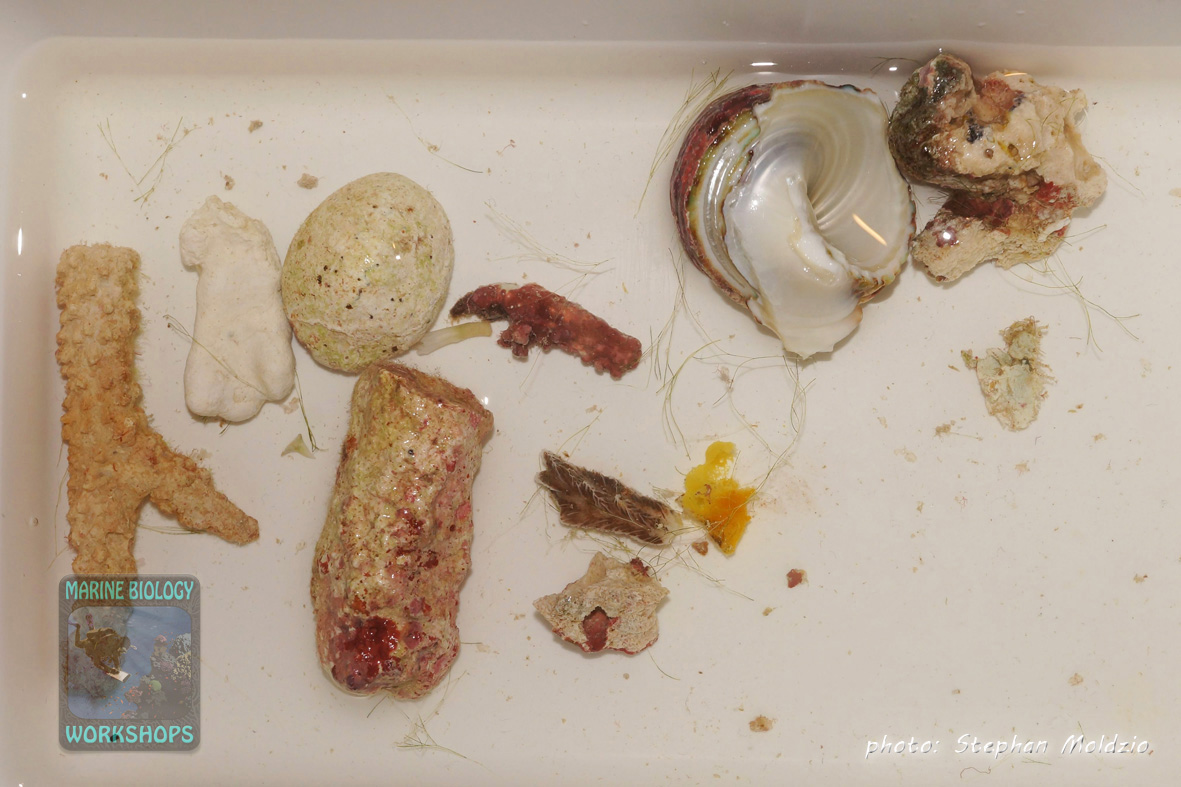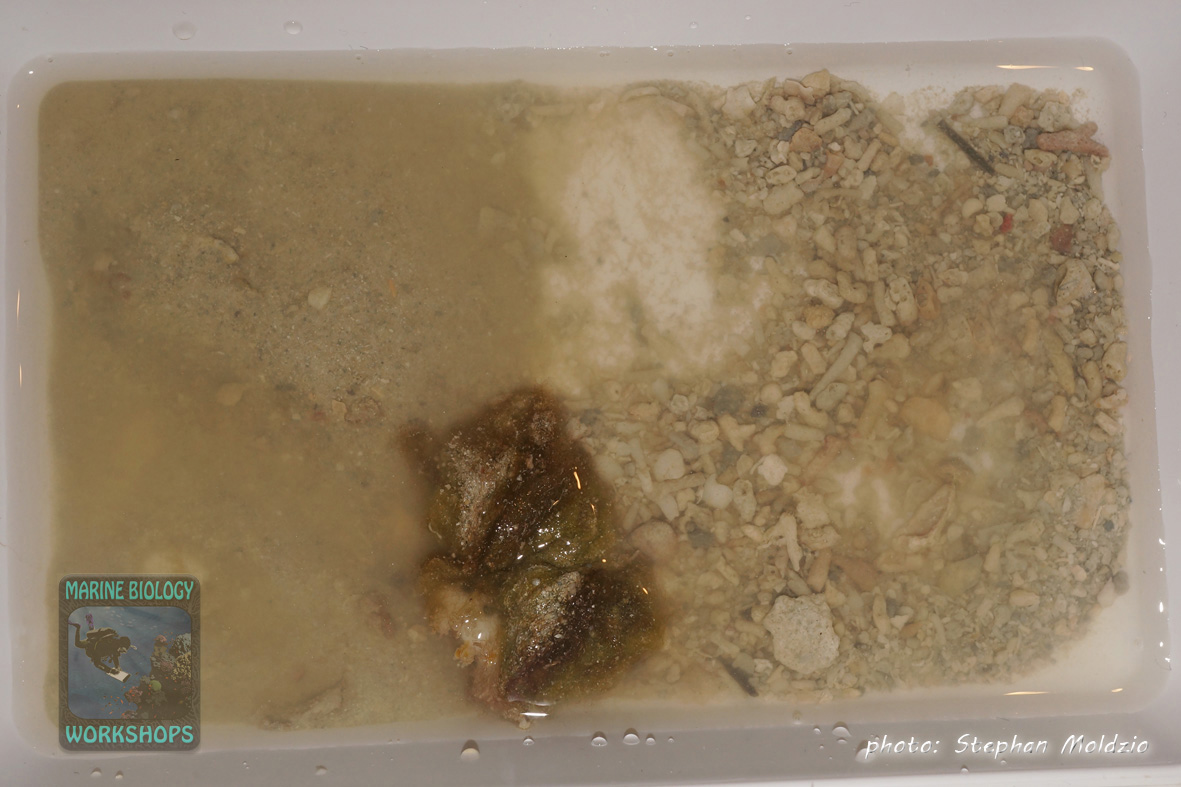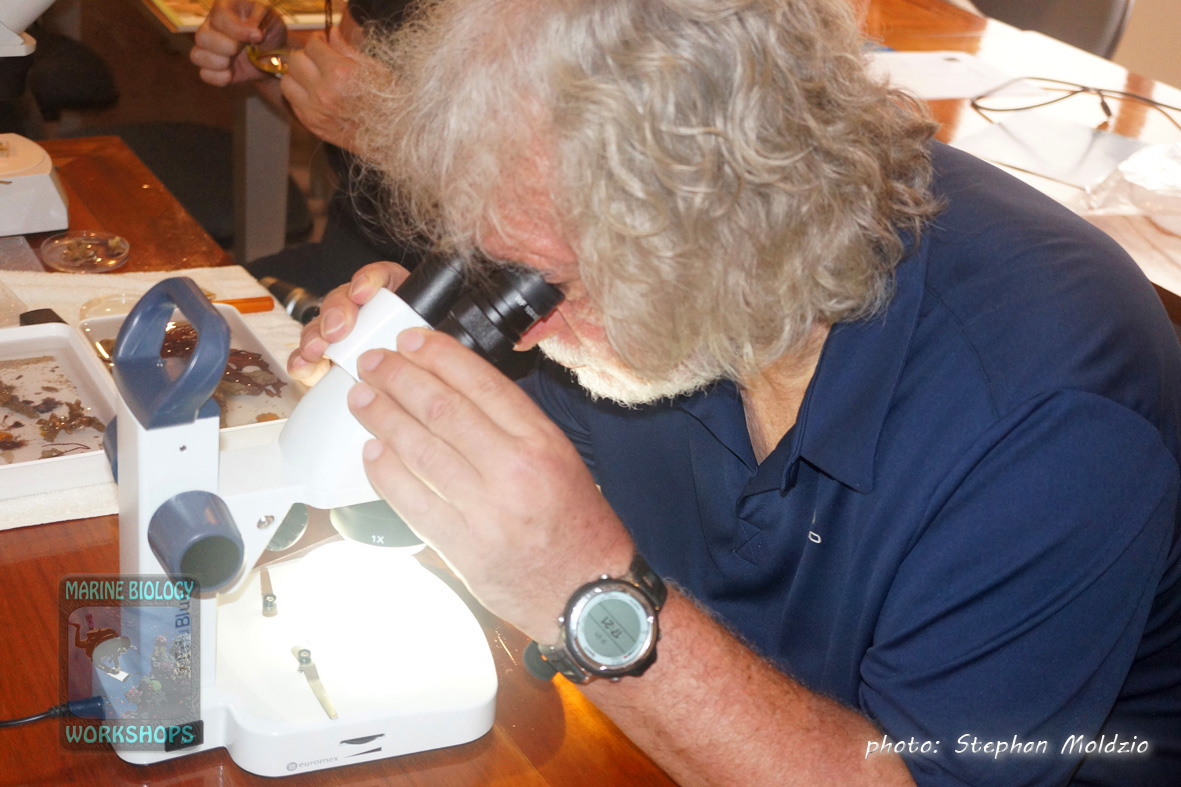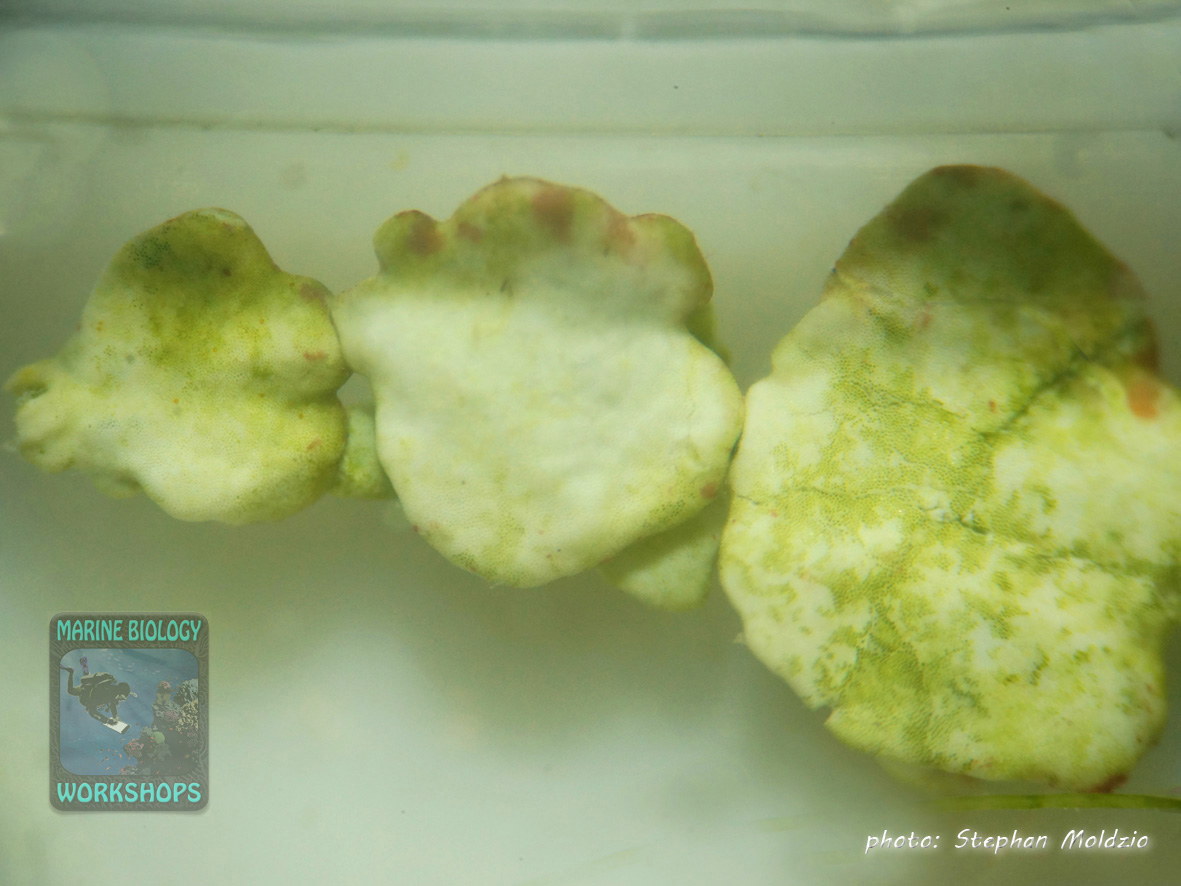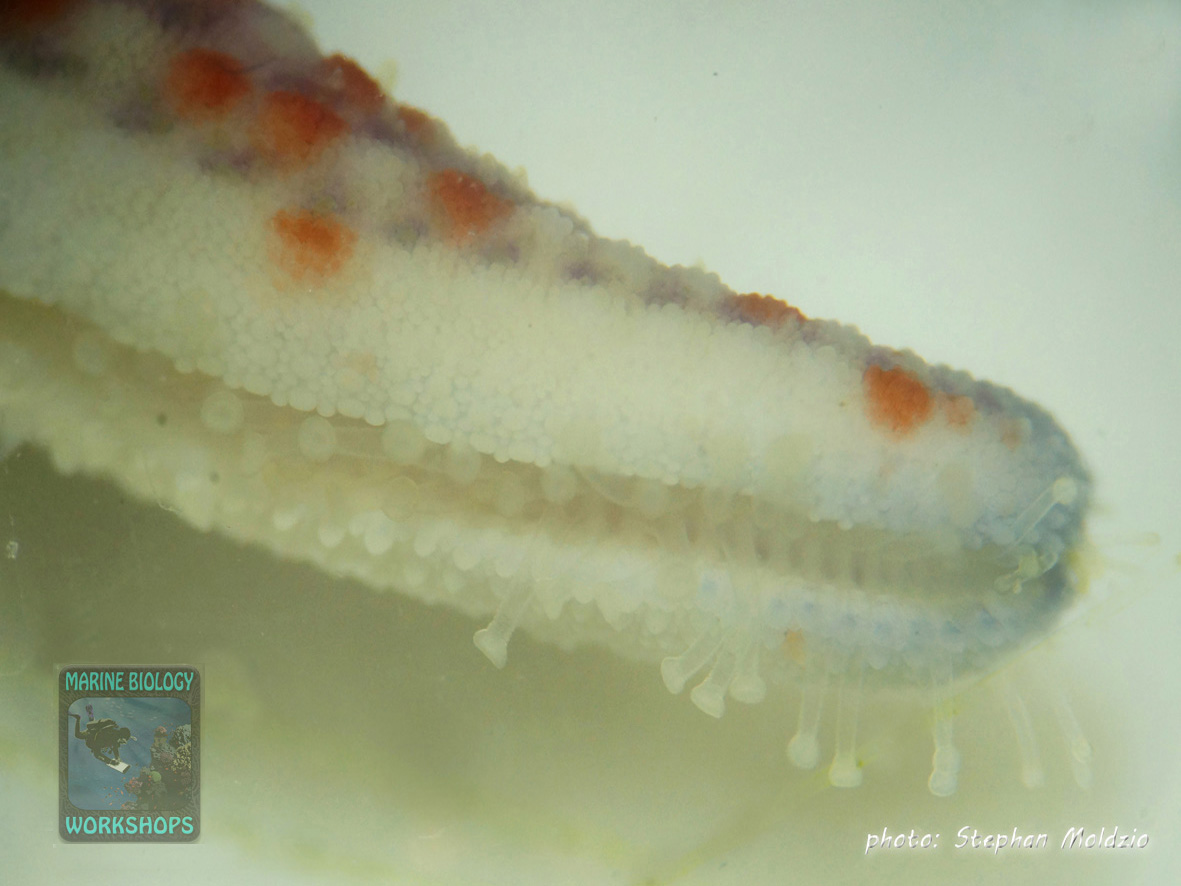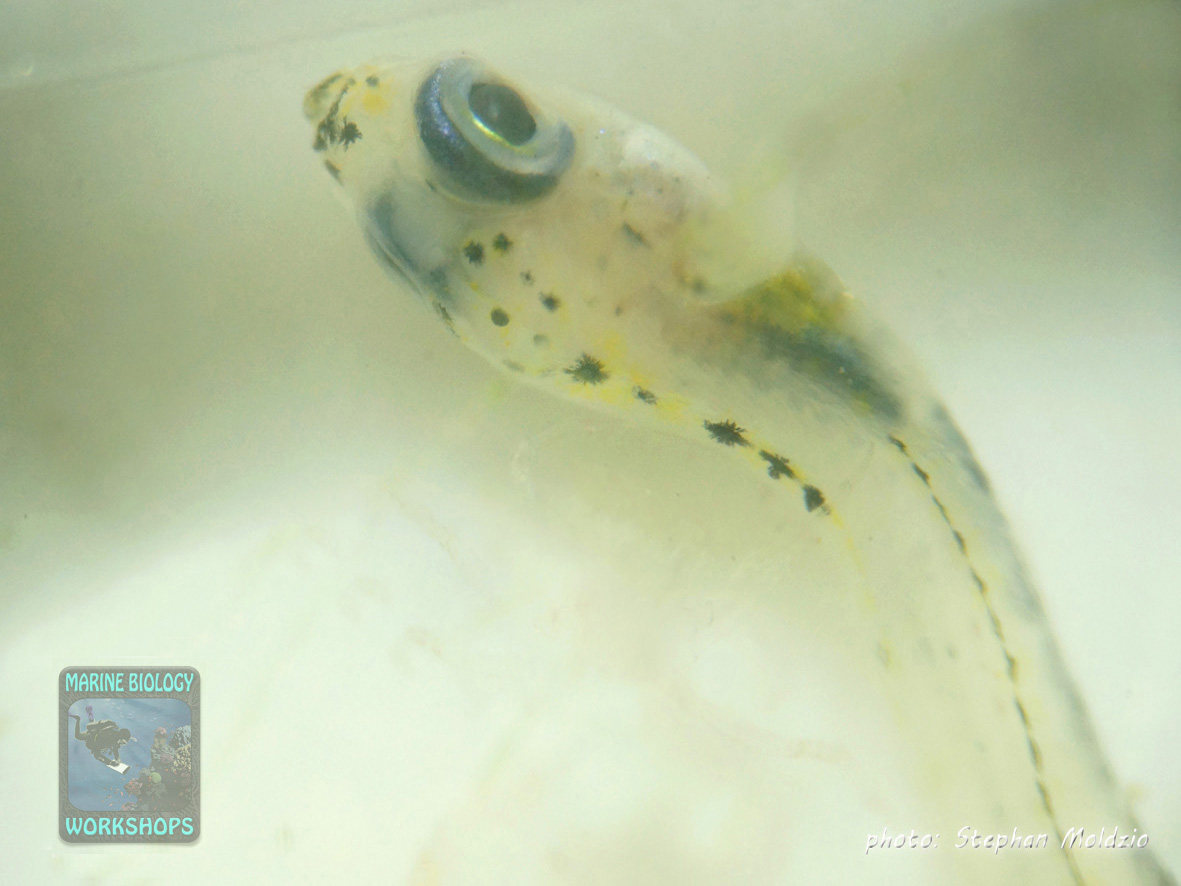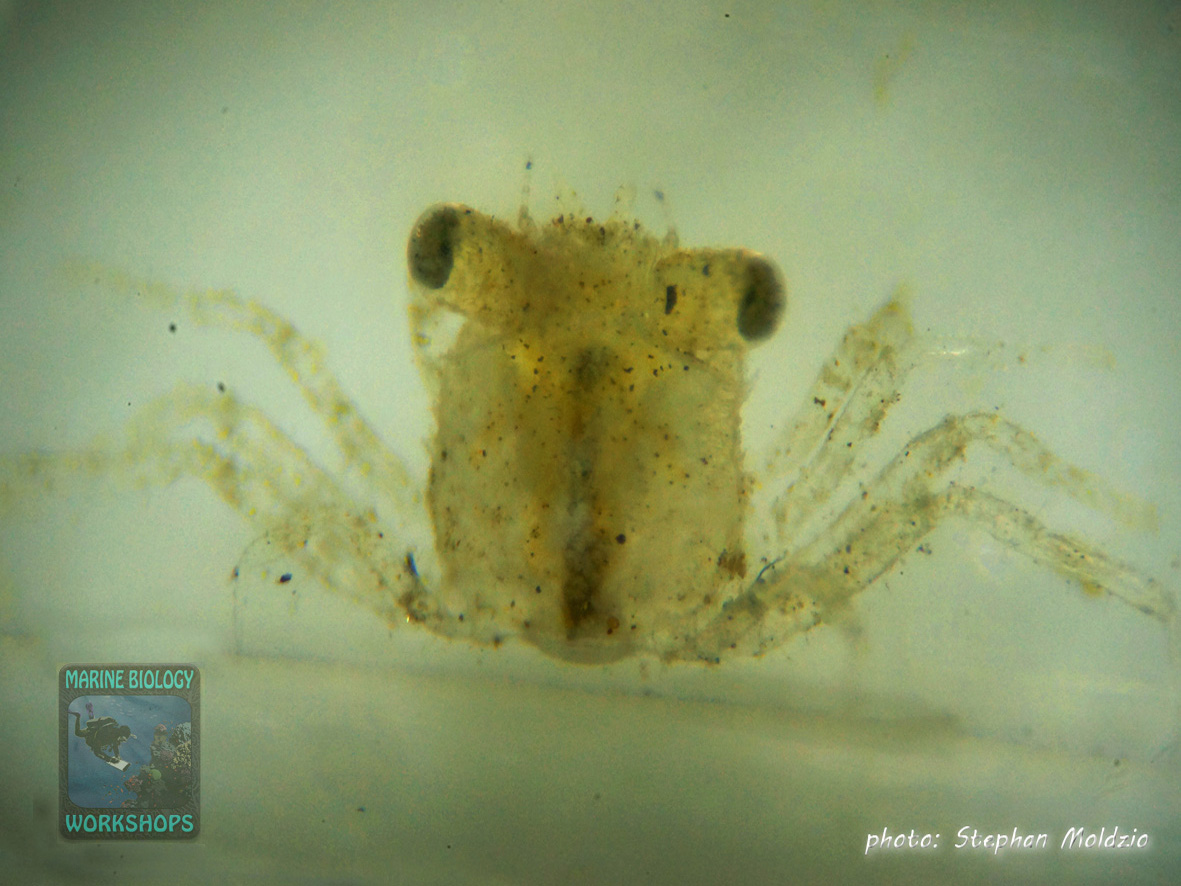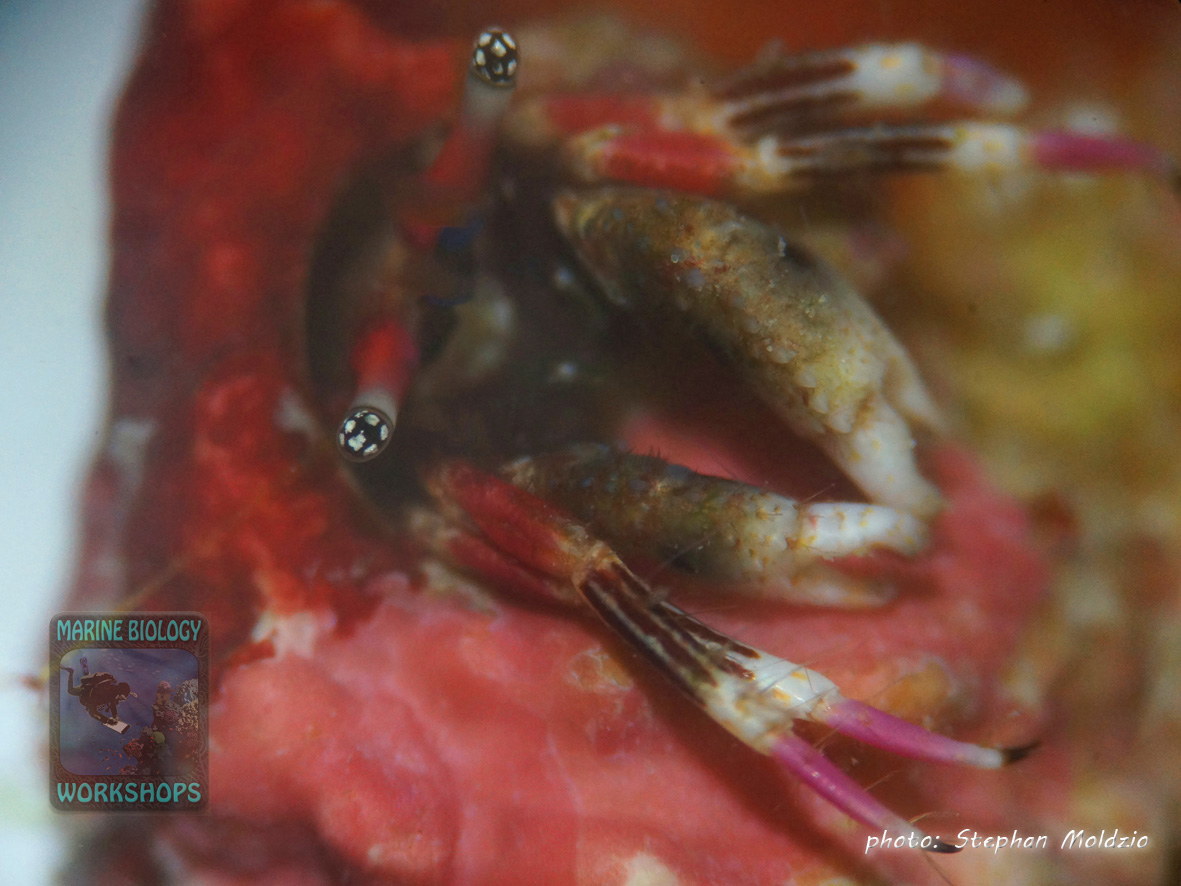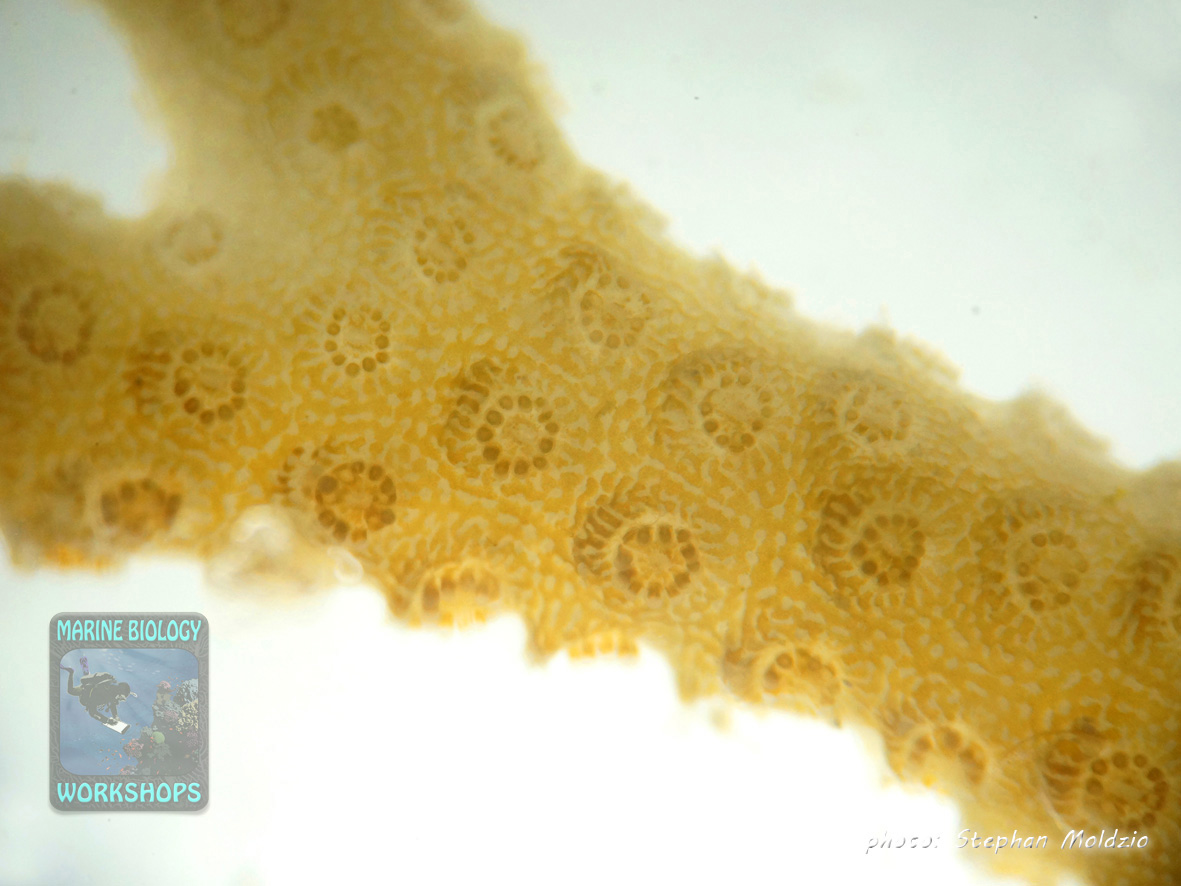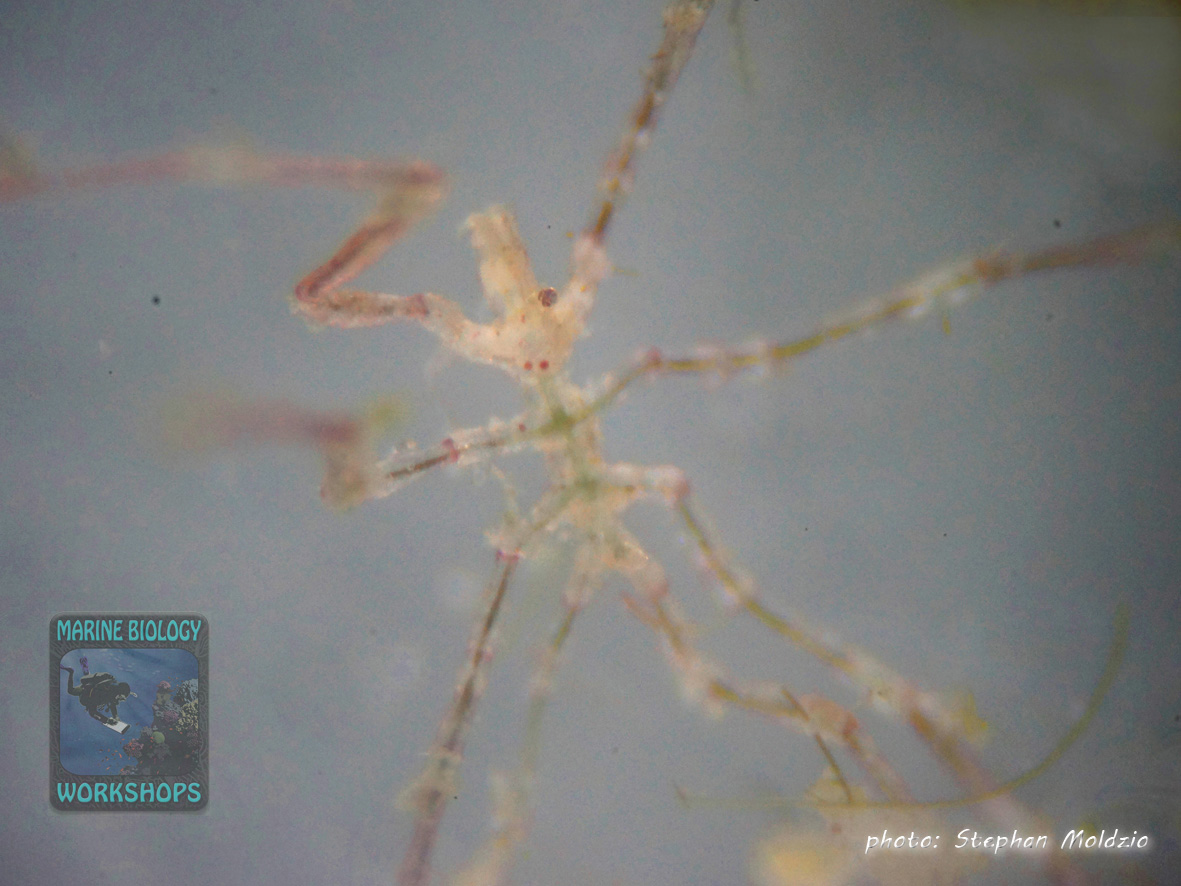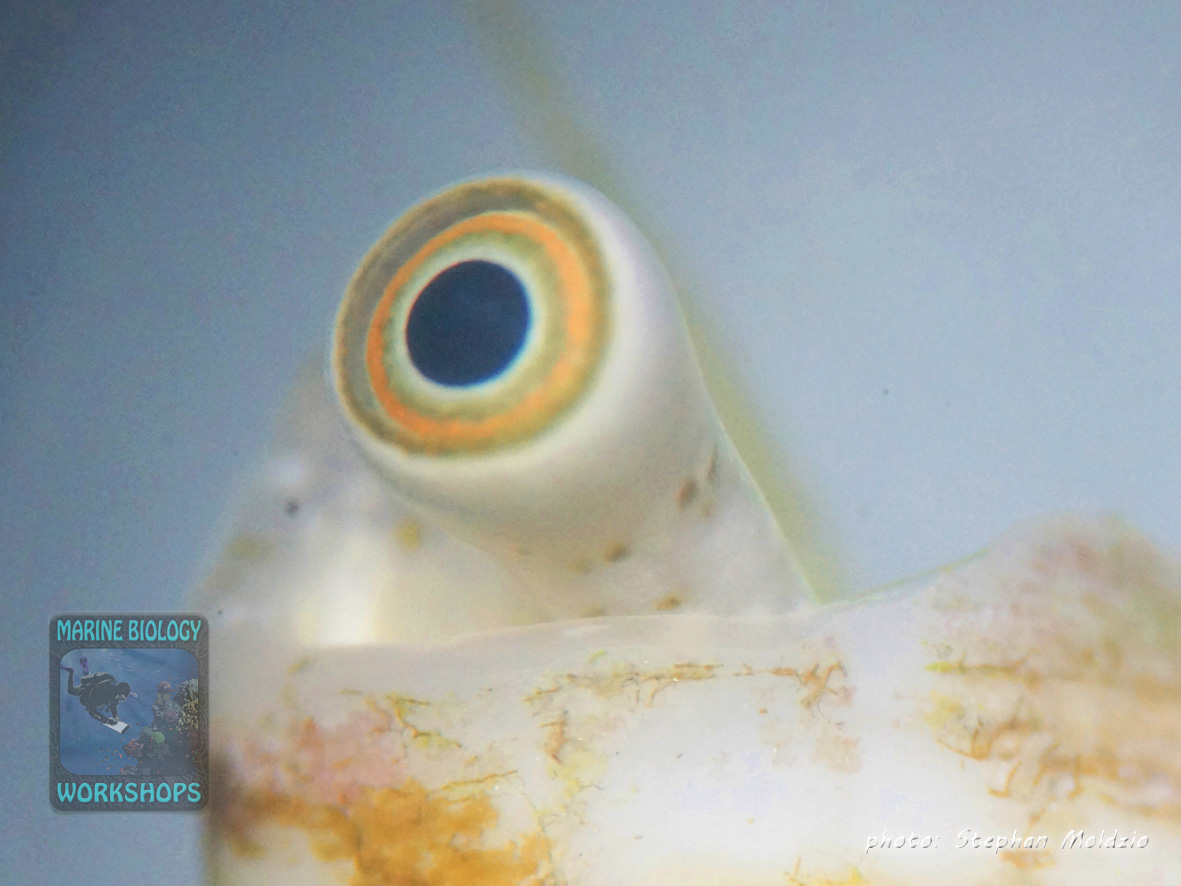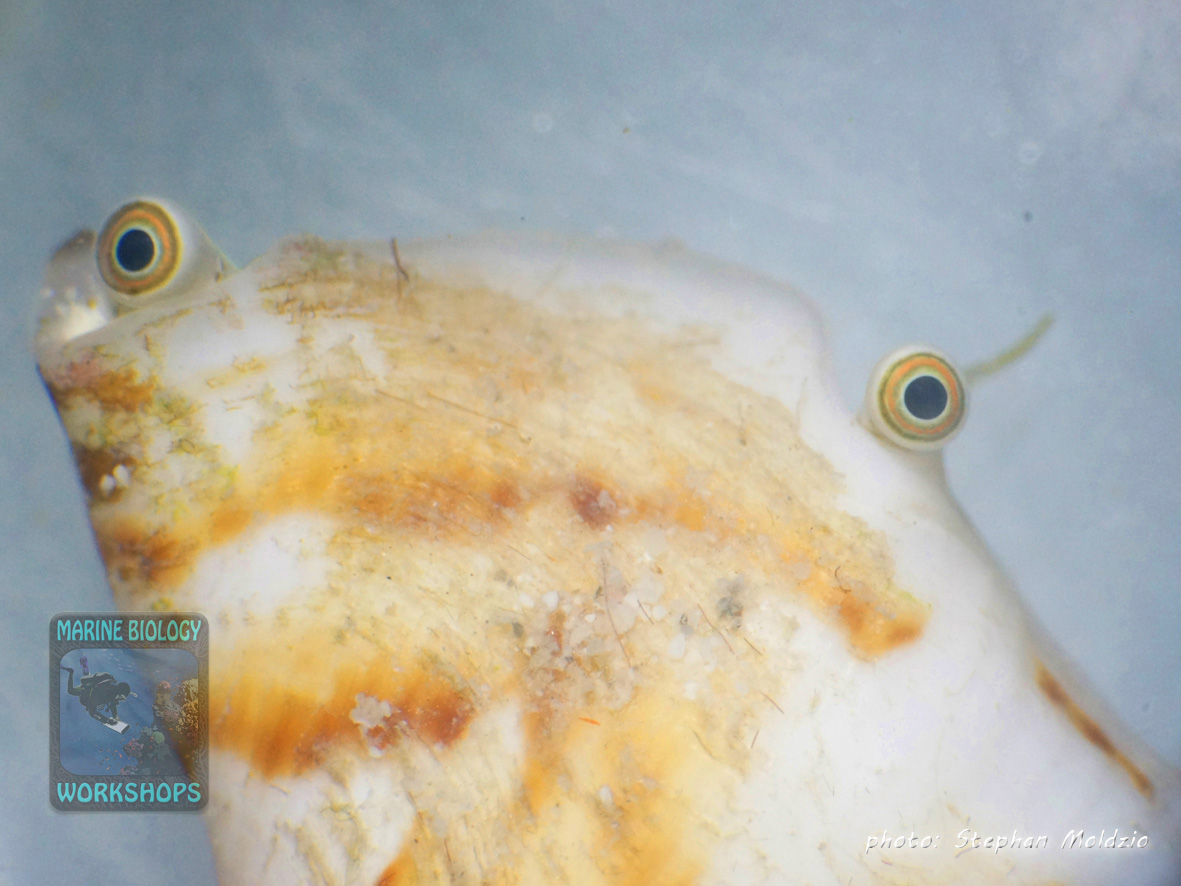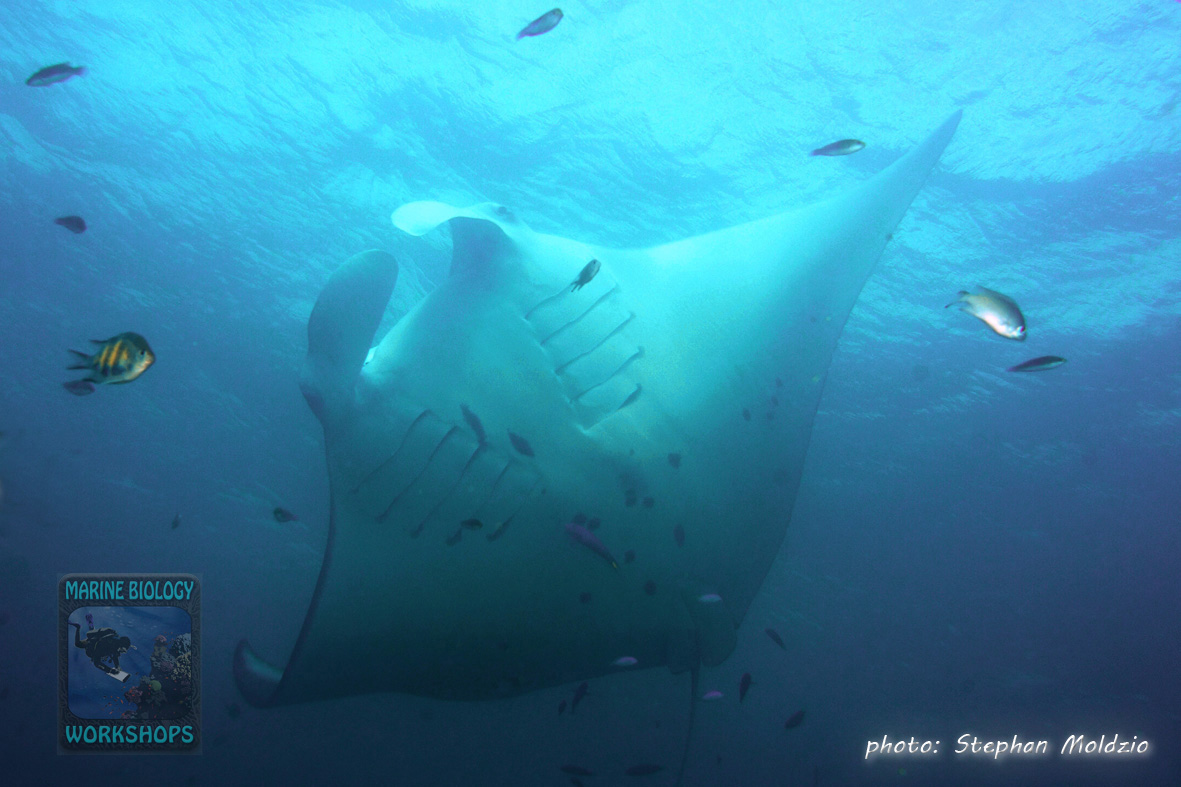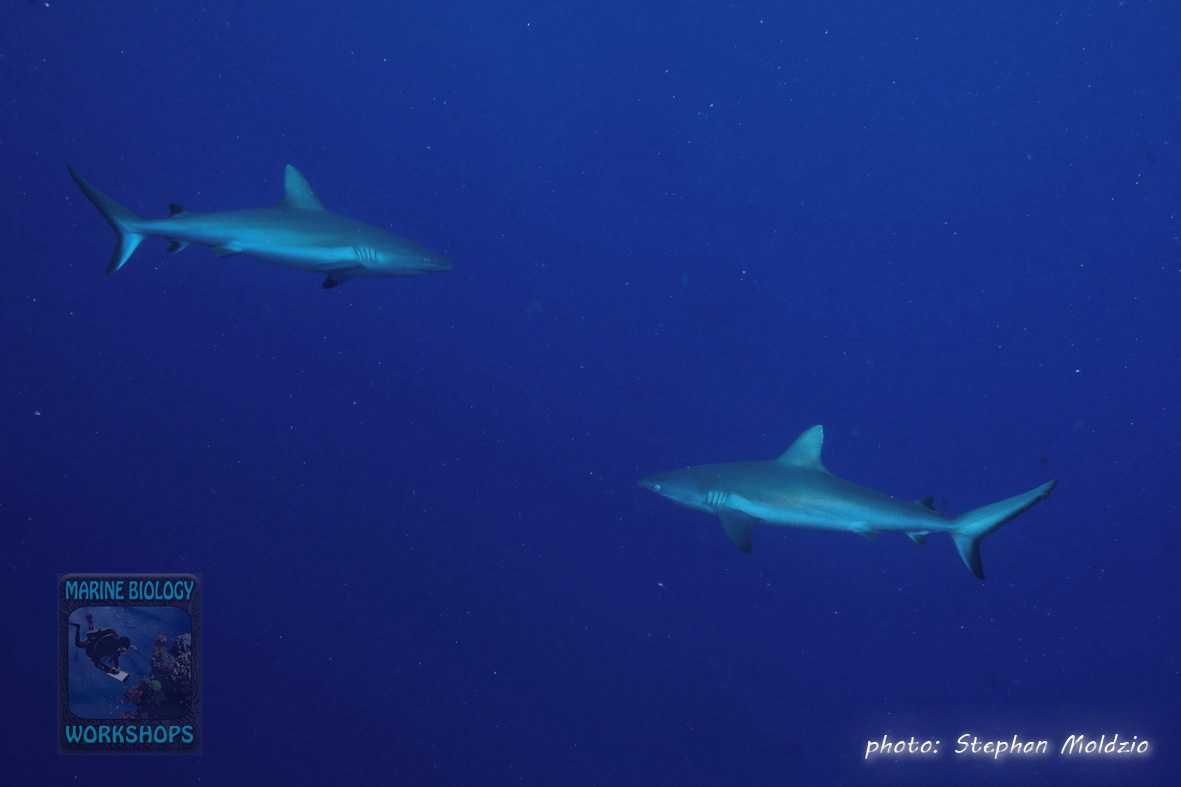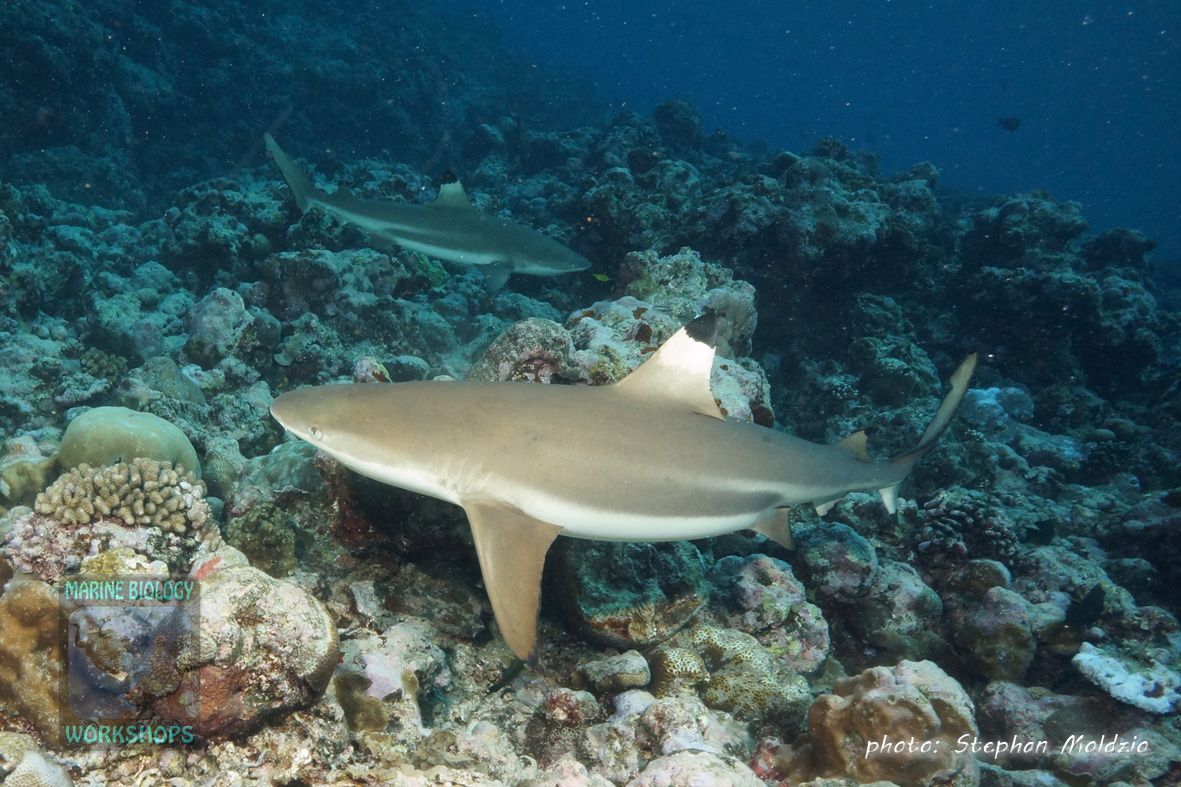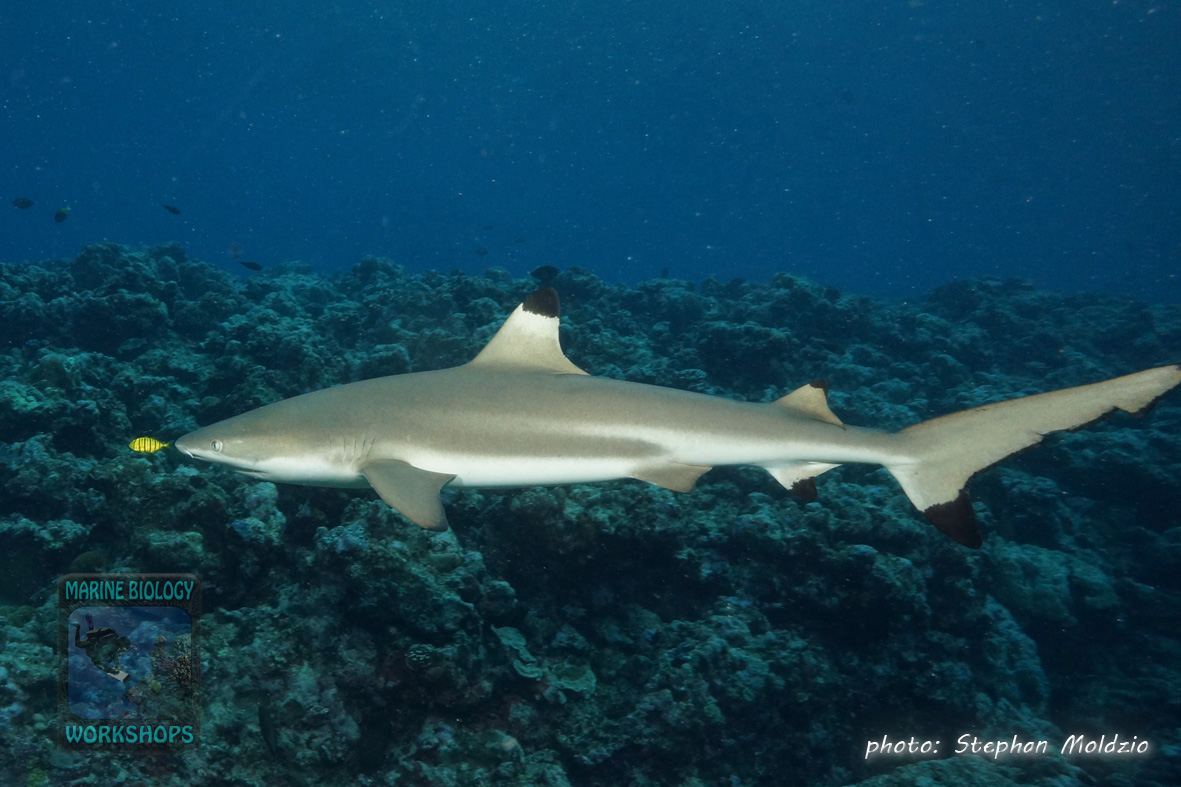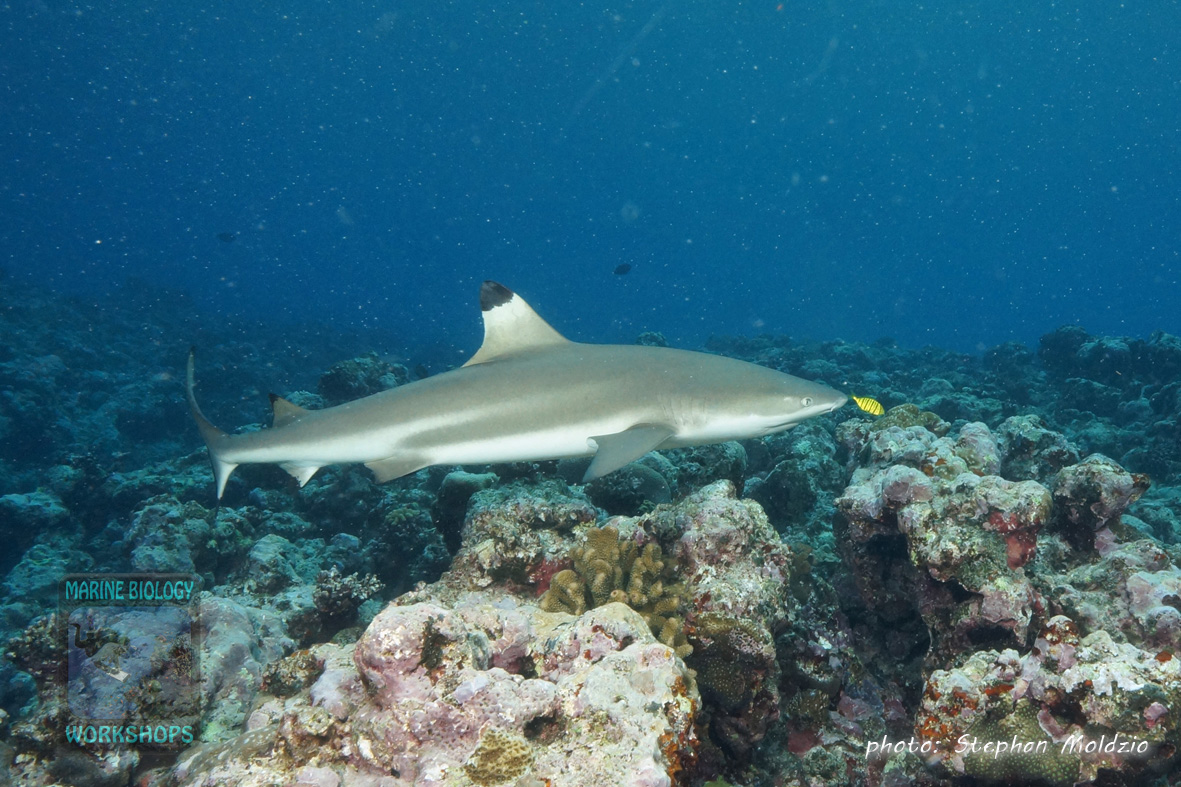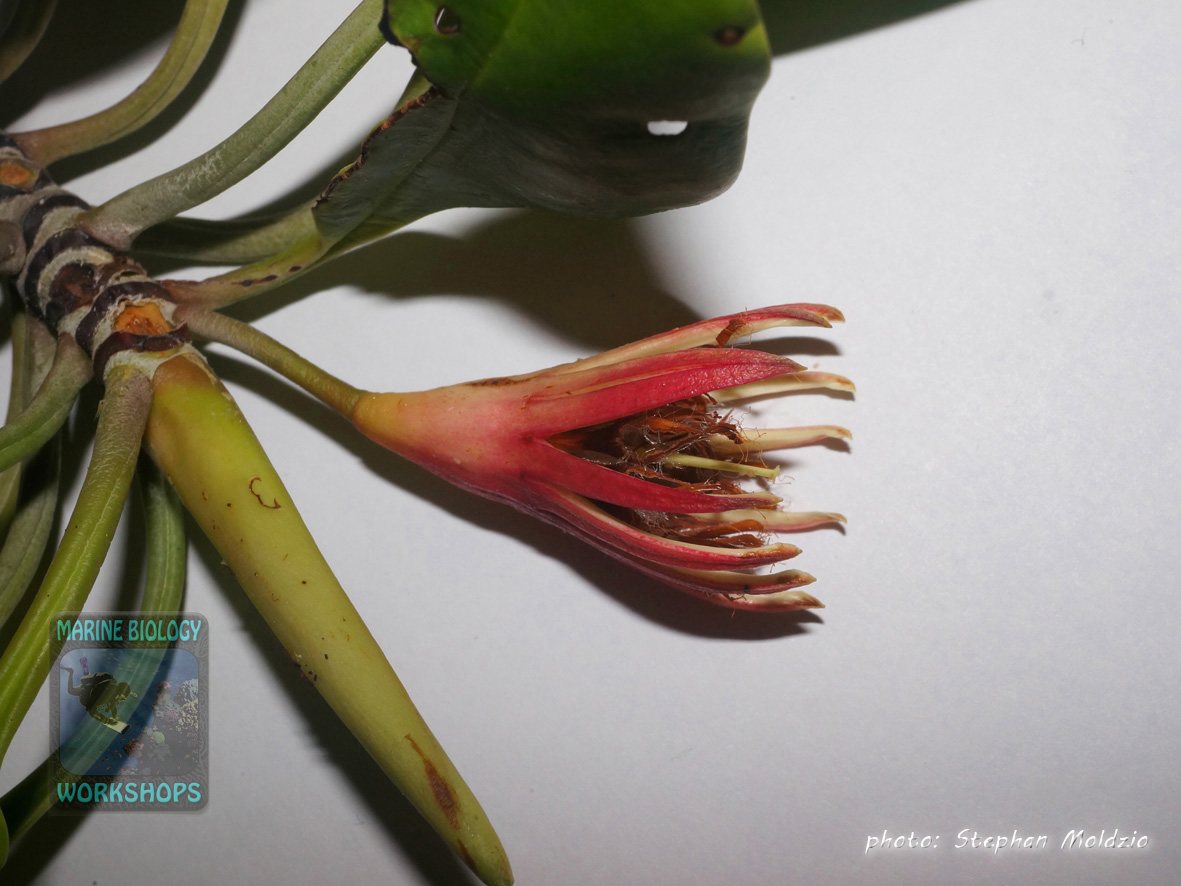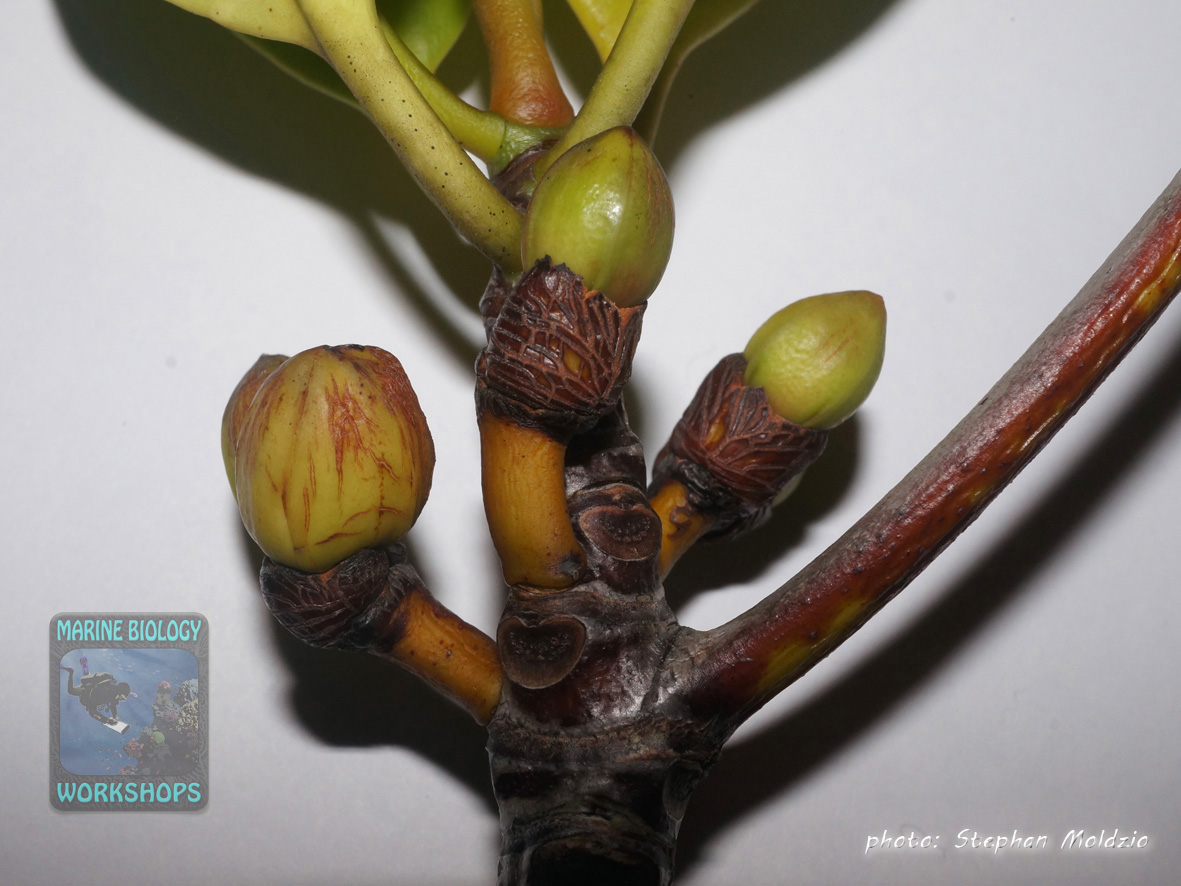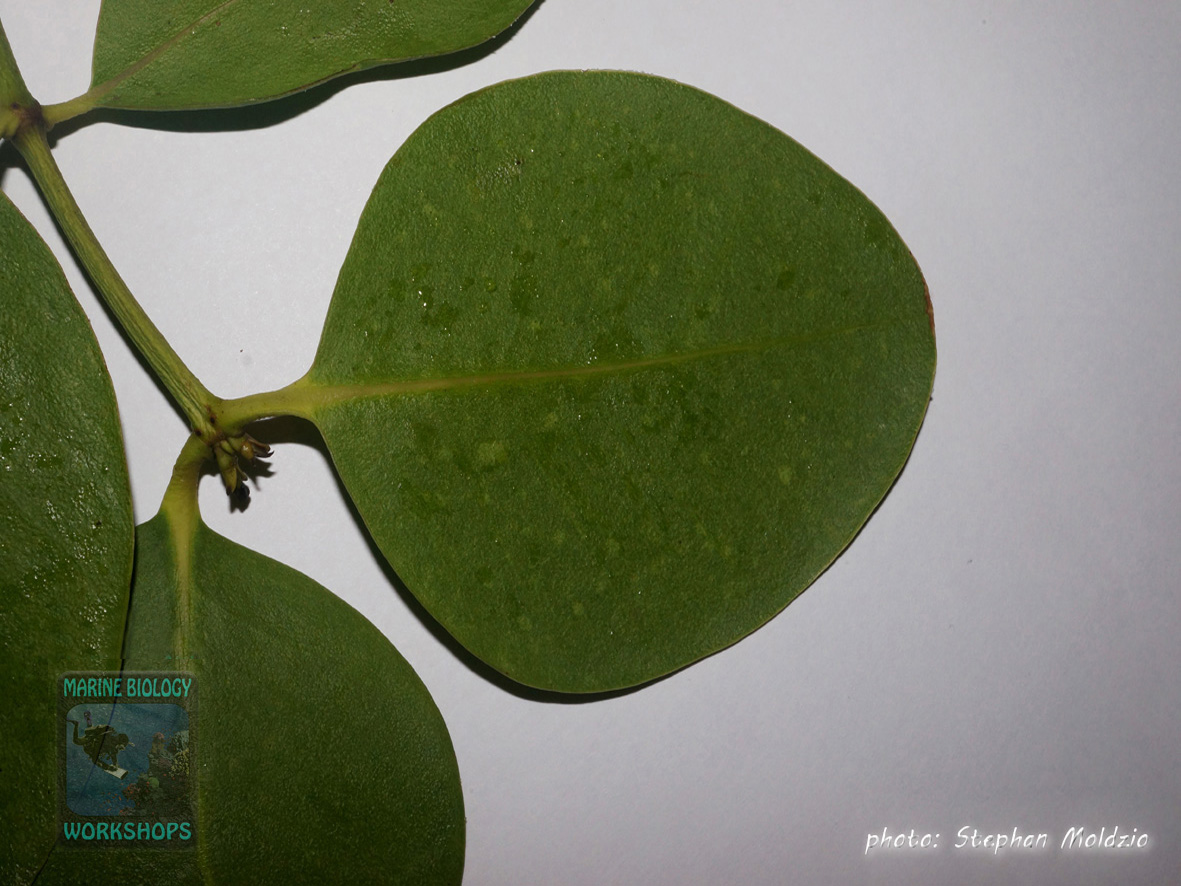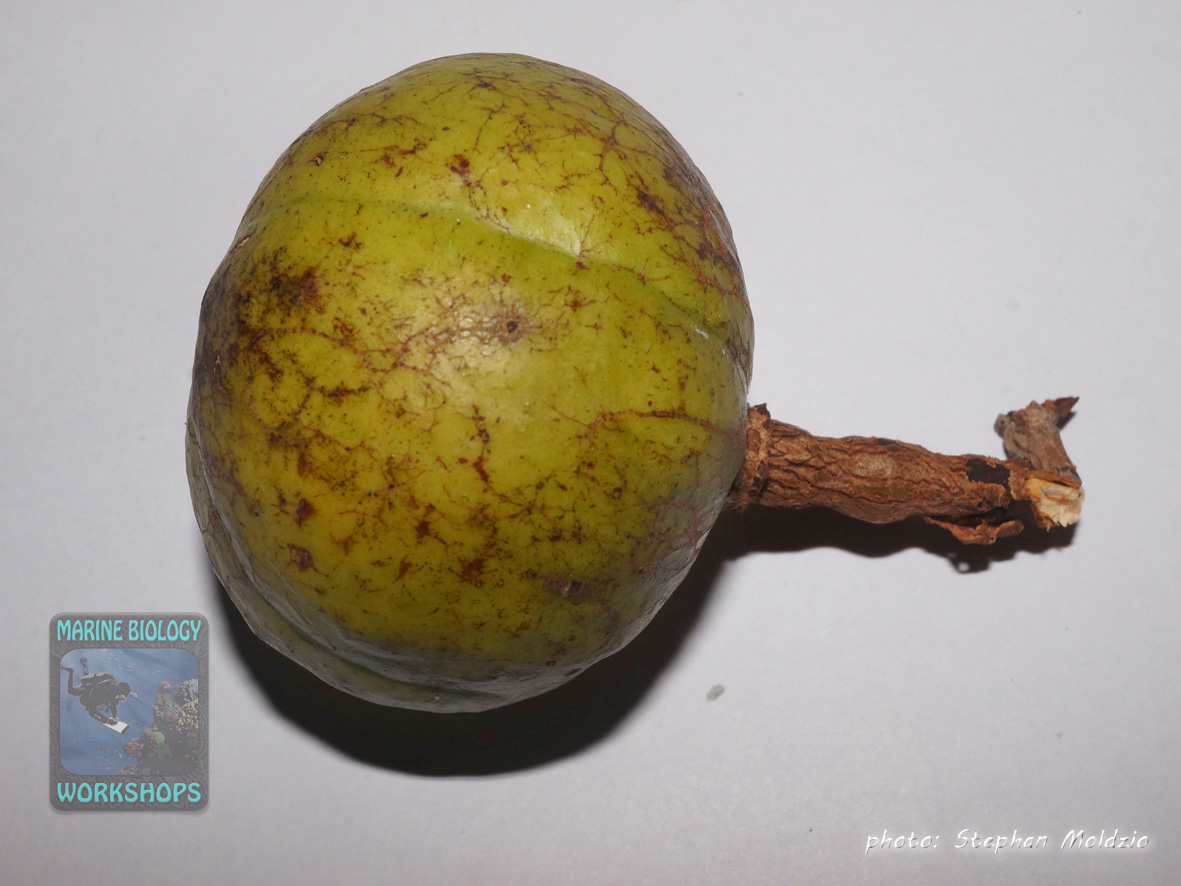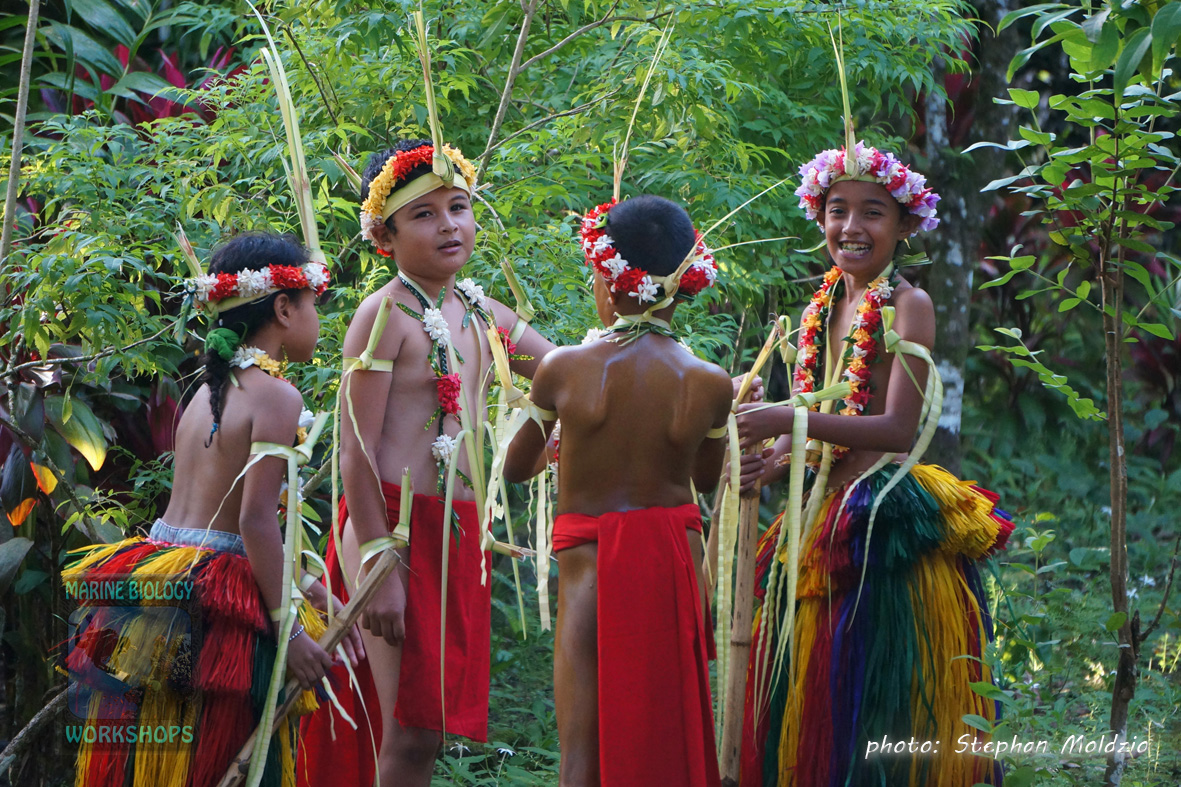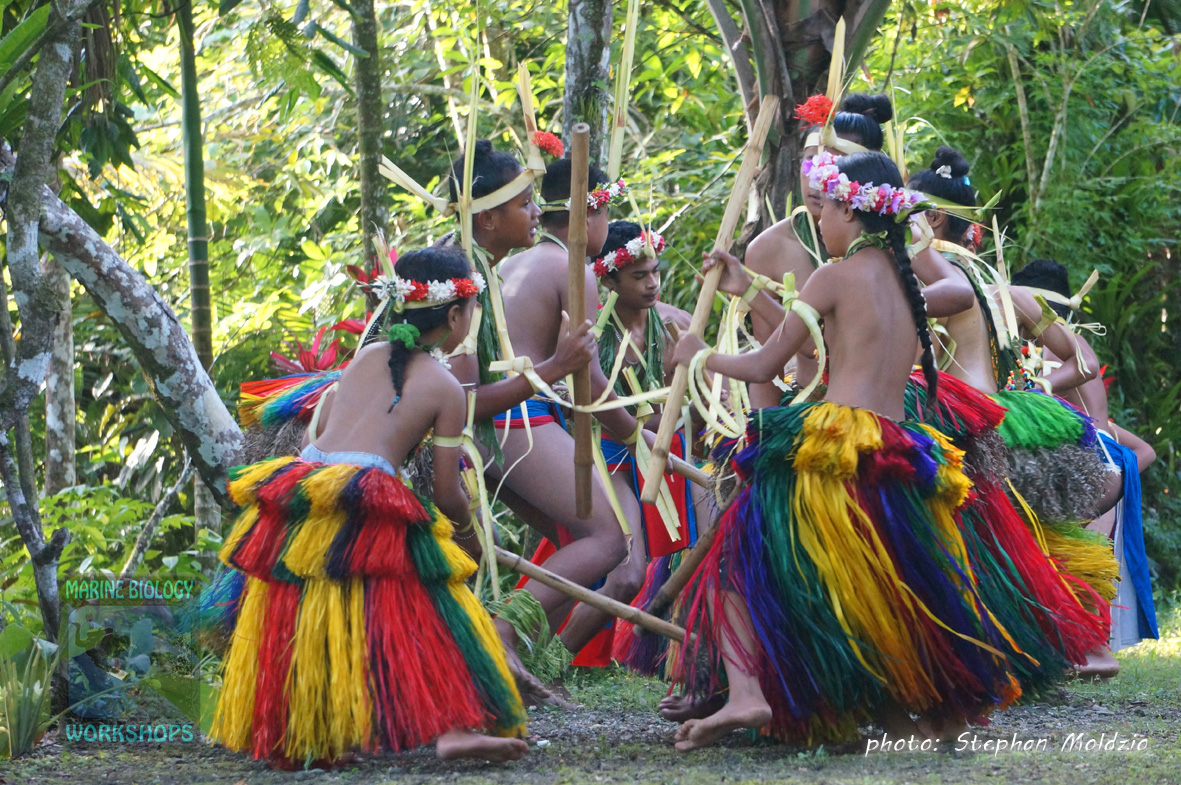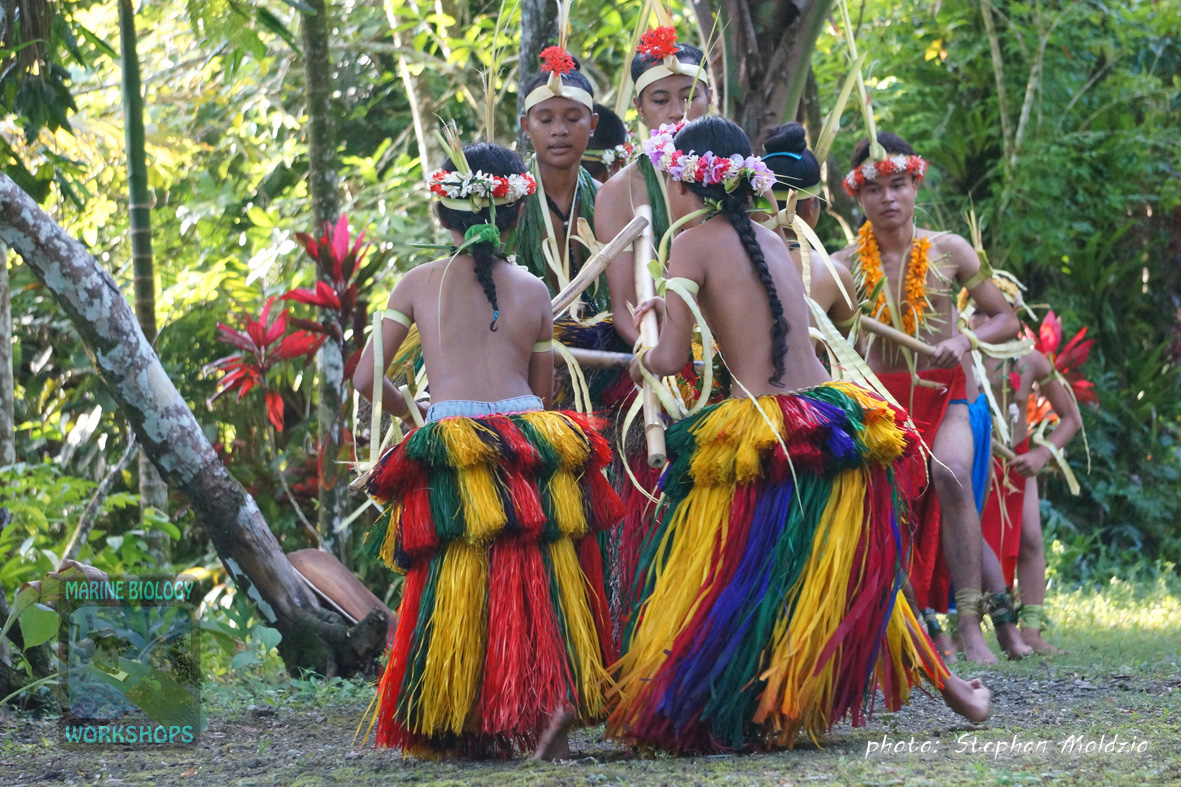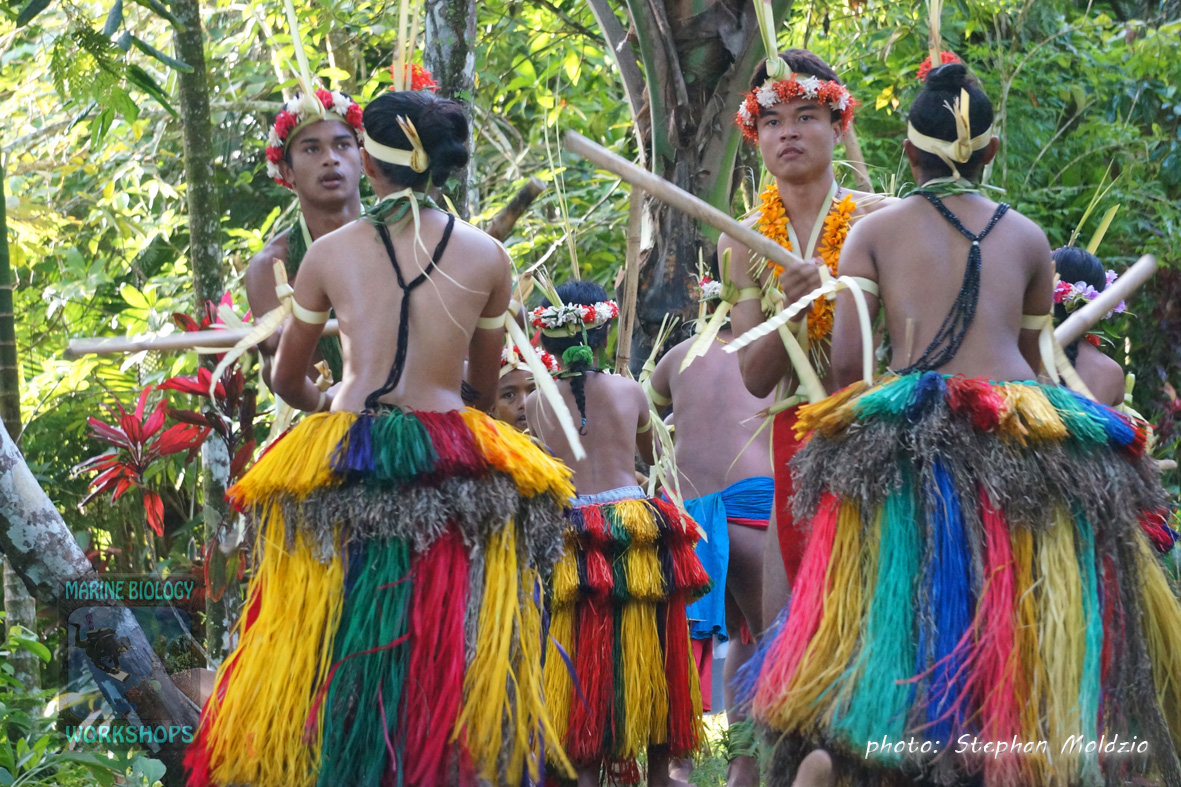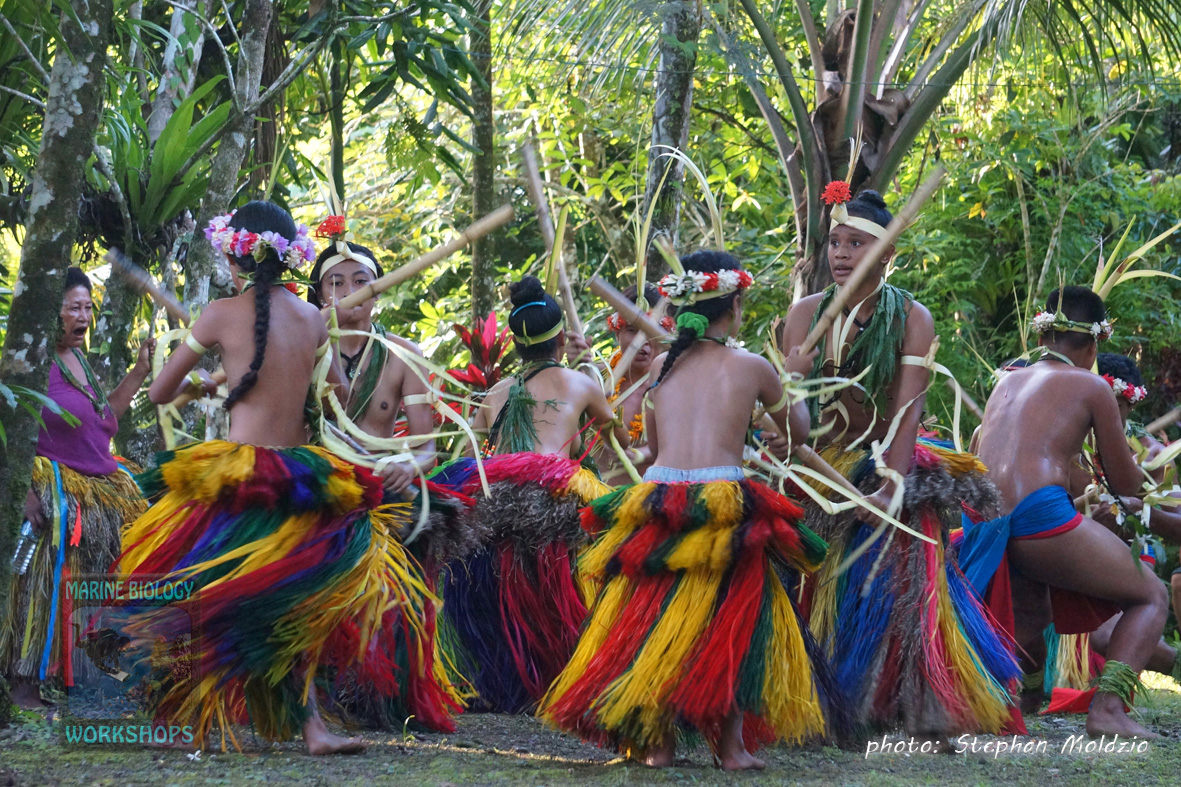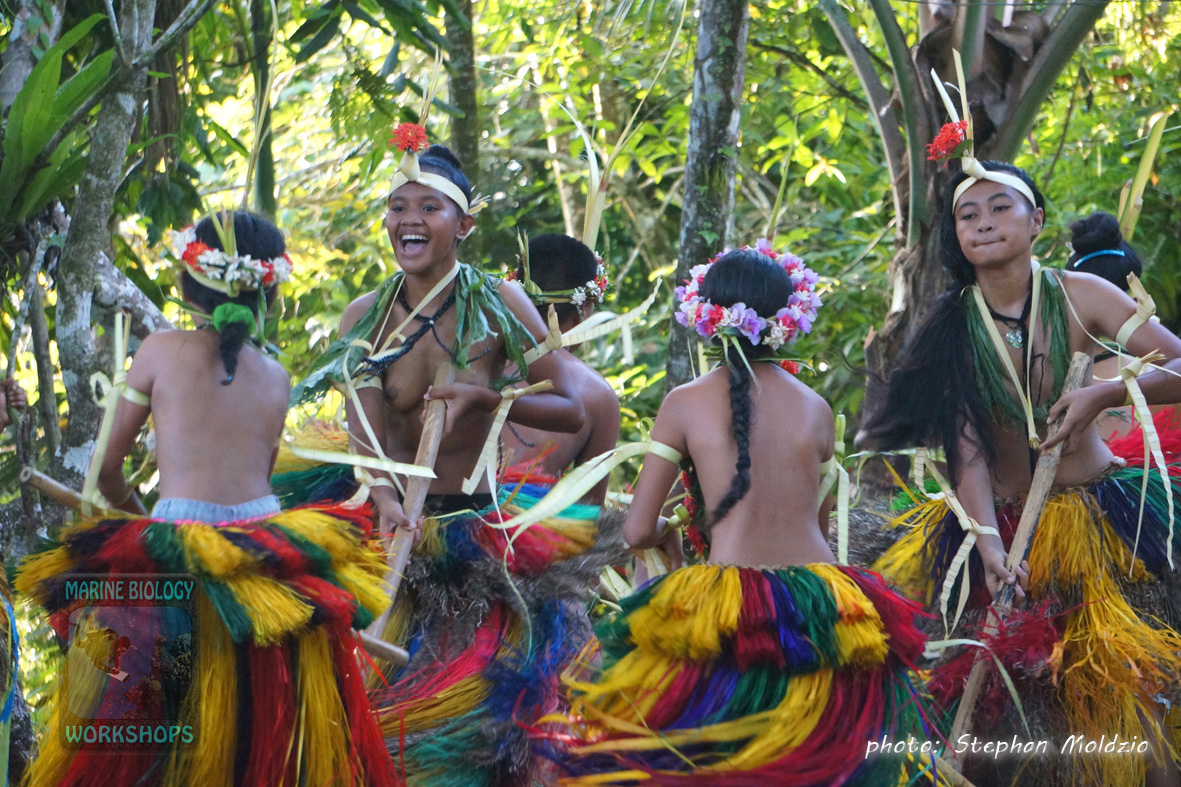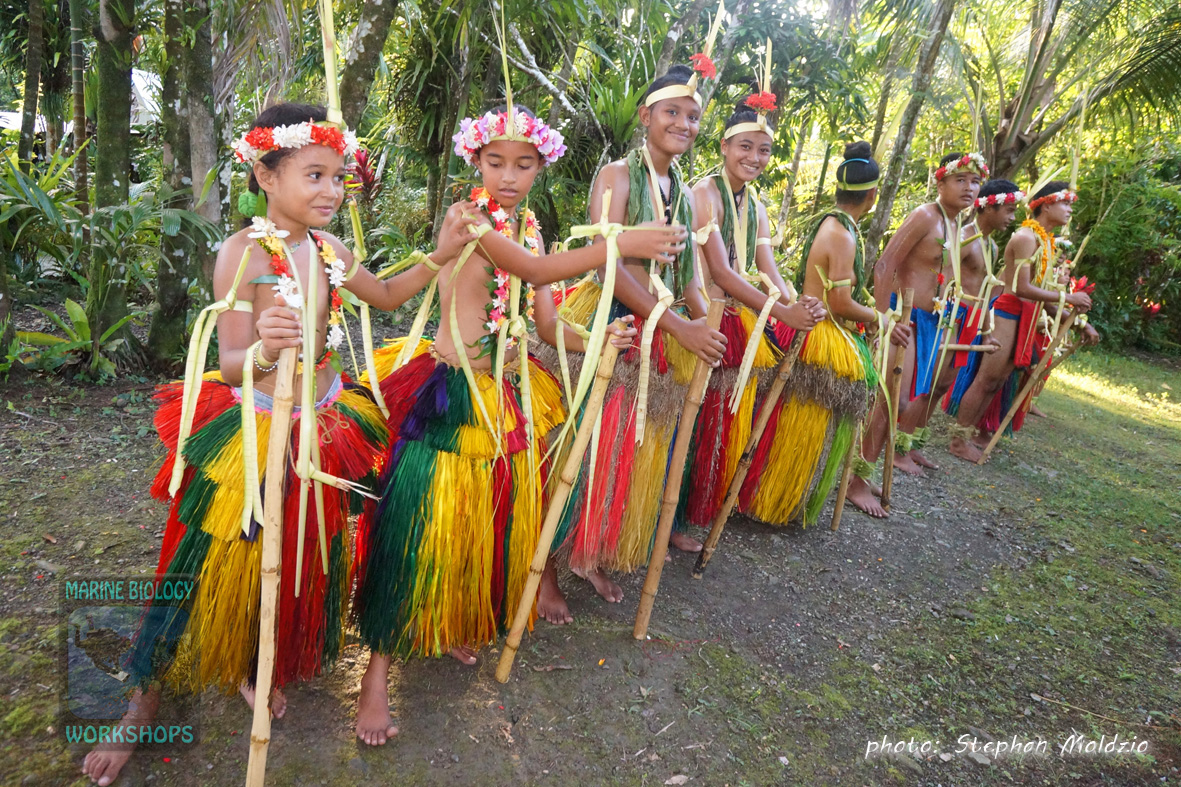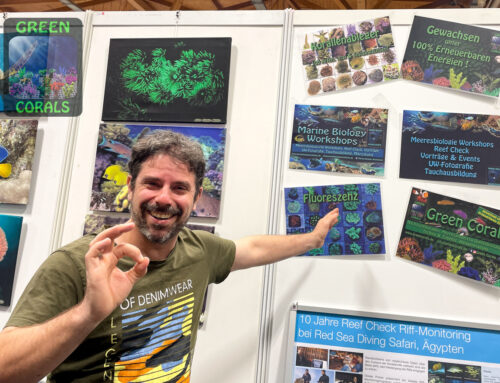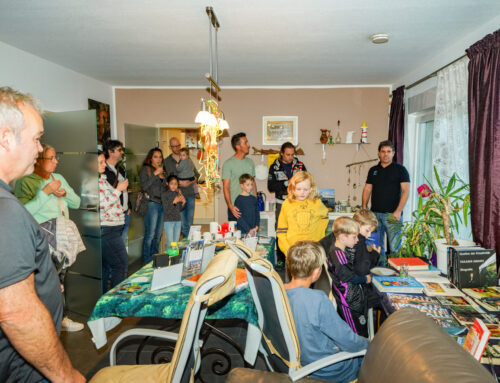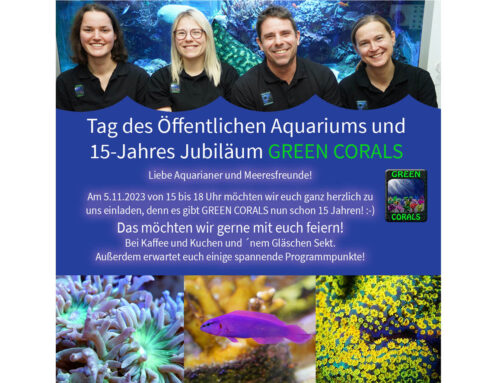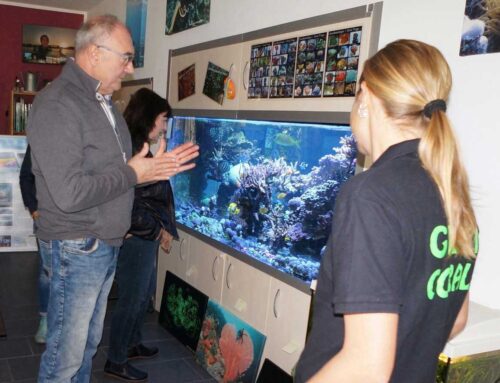at MANTA RAY BAY RESORT / YAP
From 27 October to 9 November 2019, three different marine biology workshops were successfully conducted as part of the second MARINE BIOLOGY WEEKS. Our “base” was the Manta Ray Bay Resort with the restaurant boat “Mnuw” and the Yap Divers, which provided the best conditions for the workshops with its friendly and helpful staff and excellent infrastructure.
Even on the “workshop-free” days we explored the island with its interesting history and culture between men’s houses, stone money banks and WW2 relics, visited the village in the “Maap” district where a traditional Yapese meal was prepared for us, searched for and found numerous young Napoleon wrasse in two blue holes in the reef top and on the day of departure we were able to attend the traditional bamboo dance in the “Dachngar” village.
During the two 3-day and 2-day Marine Biology Basic and Advanced Workshops and the 2-day Coral Workshop we had a varied and exciting programme of great diving and snorkelling trips, sampling and microscopy sessions, fish and coral identification, reef ecology and mangrove exploration.
In the Marine Biology workshop `basic´we first looked at the different families of reef fish, such as butterflyfish and angelfish, parrotfish and wrasse, cardinalfish and damselfish, gobies, blennies and pufferfish. When it comes to identifying fish, the most important thing is to identify the family based on specific family characteristics. Then, you can move on to species identification. The way of life, how and what the fish feed on, the way they swim, their day and night activities, the reef zone they live in or special behaviours are usually very similar within a family. With the help of our good old, tried and tested ‘fish laminates’, we gave a lively and entertaining overview of the more than 1000 species of reef fish from 88 fish families found in Micronesia. Participants were able to identify all the fish species that crossed their path during the diving and snorkelling trips…
Sampling and analysis under the microscope
On the second day, samples were taken of microorganisms and algae living on the reef rocks, in the sand or in the plankton. These were then examined under a stereomicroscope.
From a wide variety of algae to small protozoa, crustaceans, bristle worms, snails and brittle stars, as well as their larvae developing in the plankton, everything was included. It’s always fascinating to see what lives in the shadows, and every sample is unique! These small creatures are what we constantly see the various fish looking for and pecking at during our dives and these tiny organisms form the basis of the food web in the reef.
Manta and shark special
Day three was the manta and shark special. We had ordered the majestic reef manta rays to the “Stammtisch” dive site, where they are regularly used to turn up. At this site in the Mi’l lagoon you can almost always find manta rays, as they come into the lagoon not only to feed in the plankton-rich water, but also to visit a cleaning station. Here, cleaner wrasses of the genus Labroides make sure that their “clients” are rid of annoying skin parasites or gill worms. It is a mutually beneficial symbiotic relationship. In fact, there are not one, but three different species of cleaner wrasse, each having a specific ecology and behaviour. From damselfish to majestic manta rays, this is a complete wellness programme for all fish that are interested in this service. At the dive site `Vertigo´ we were able to interact with numerous sharks. While the grey reef sharks (Carcharhinus amblyrhynchos) tended to swim around us in the blue water at a depth of around 20m and disappear after a while, the numerous blacktip reef sharks (Carcharhinus melanopterus) stayed close to us all the time and tended to be in the shallow water above the reef top. We also found it remarkable how a young Pilot Mackerel (Naucrates ductor) would always swim a few centimetres AHEAD of the tip of a shark’s snout, following every turn and almost “anticipating” it. It was as if the two creatures had an invisible bond!

Mandarinfish courtship at Rainbow Reef
In the evening, just before sunset, we went to ‘Rainbow Reef’ deep inside the lagoon to watch the mandarin fish (Pterosynchiropus splendidus) mating. Each day, just before dusk, the males and females perform an enchanting mating dance before finally spawning in the open water.
During the evening lectures on the deck of the rustic restaurant ship Mnuw, the lecture “Coral Reef Ecosystem” focused on the basics and ecological relationships in the reef, while the presentation “Voyage to the Sea” focused on the current threats to coral reefs and environmental conservation.
Excursion into the mangroves
After this first workshop on coral reef ecology, we went on an excursion to the mangrove habitat. First we rowed in a kayak through a dense mangrove area in the `Tamil´ district, where we were greeted by a large land crab.
But then we wanted to explore this fascinating habitat underwater, so we took to the water with our snorkelling gear.
The mangroves not only play an important role in protecting the coast from erosion, tsunamis and storm waves, but also act as a nursery for neighbouring reefs.
But what kind of diver or snorkeller goes into the water here? While visibility is very low at low tide, at high tide the visibility was about 5-6 metres and we were able to see how important the mangroves are for the reefs:
In addition to the specific inhabitants of the mangroves, such as archerfish, halfbeaks, cardinalfish, mangrove crabs, snails and sea squirts, the thicket of stilt roots is home to countless juveniles of a wide variety of reef fish, including damselfish, butterflyfish and triggerfish, as well as hunting snappers and jacks. However, much of the life is hidden in the sediment – crabs, snails and other invertebrates – their presence only revealed to us through the many holes in the mud. Mangrove leaves in various stages of decomposition are scattered across the bottom. The bacteria and micro-organisms that use these leaves as a constant source of food in turn provide food for a wide variety of filter feeders, sponges and sea squirts, bivalves and tube worms, as well as the few species of coral that can also be found in the mangrove zone.
These extremely robust corals have developed various adaptations to cope with fluctuations in temperature and salinity and to protect themselves from sedimentation.
The next day we started the two-day Marine Biology Workshop ‘advanced’, where we deepened our knowledge from the ‘basic’ workshop and continued to study fish using the database `www.fishbase.org´. This time on a species level, with the aim of compiling a list of fish species found around Yap. There are several free zoological databases on the internet where you can find practically any information you are interested in – you just have to know where, how and what to look for. In the evening there was a lecture on “Fishes of the Indo-Pacific” to sum up the day. Our diving and snorkelling trips on the first day took us to the Yap Caverns and the Lionfish Wall on the outer reef at the southern tip of Yap. Two turtles and three reef sharks crossed our way – nothing unusual for a dive in Yap.
On the second day we returned to the lagoons in `Goofnuw ´and `Mi’l Channel´. Once again we collected samples for examination under the stereo microscope. This time we identified the invertebrates as accurately as possible, worked on a sampling record and a zoological drawing. During the night dive we observed the various invertebrates that are hidden in the crevices of the reef during the day, including a large spiny lobster and a crown-of-thorns starfish. The colourful parrotfish sleep like enchanted princesses in their slime cocoons on the reef.
On the day of the land tour, we stayed dry for once – because there are plenty of exciting things to see on the island, too. First, there are the traditional Micronesian “men’s houses” – meeting places where important discussions and decisions are made.
Charly, who was showing us around the island, explained that the different parts of the house are made from different types of wood, depending on what is best for the use and type of load. A Yapese speciality is “stone money” – large, round stone discs with a hole in the middle. Their special value in earlier centuries was due to the fact that the limestone is not found on Yap and the discs had to be transported at great expense and risk by sailing ship from Palau, 440km away. As well as seeing native animals, such as a lizard eating a caterpillar, we also saw how the main crops are grown in the mixed agroforest: “Taro patches in swampy areas, with coconut and banana palms in between. And, of course, the coveted betel nut, which almost every true Yapese chews contentedly in his cheek pocket. Add a little betel pepper (Piper betle) and a pinch of slaked lime (CaOH2) and the day can begin! The villages of Yap are linked by stone paths..
During the Second World War, the fierce naval war between Japan and the USA also raged around the island of Yap. Various crashed planes, guns and other relics are scattered around the island and marked with information boards.
During the 2-day Coral Workshop we took an in-depth look at the biology of coral, the main reef builders, their different growth forms and the identification of the main genera. Using the `Indopacific Coral Finder´ coral identification tool, developed by Russell Kelley, we looked at the overall appearance of corals, whether they are branching, columnar, massive, plate or encrusting, or whether they occur as free-living individual polyps. (branching, meandering ridges & valleys, massive or thick colonies, thin plates & crusts, solitary or free-living, large, day-expanding polyps, columns, blue, fire, organ pipe, lace corals).
After the introductory presentations we went out on the reef with the waterproof Coral Finder for practical coral identification. Günter, who at first had his doubts about coral identification, then walked purposefully through the reef with his Coral Finder, identifying coral after coral. What a sense of achievement! It’s really not that difficult.
We found many different species at the lagoon dive sites `Mi ‘l Channel´, `Hide&Seek´ and `Circus Wreck´, `Yellow Wall´ and `Magic Kingdom´ on the outer reef on the west side`, as well as `End of the Land´ on the rough and exposed east side.
Bamboo Dance in Dachngar
The cultural highlight of the trip awaited us on the day of departure:
We were able to attend a traditional bamboo dance in the village of `Dachngar´. About 20 dancers had already dressed up and painted themselves. During the brief welcome, a village elder explained that each dance represented a particular tradition from the past of the village community – in other words, a story. He himself did not take part – this very dynamic and certainly quite strenuous dance was reserved for the younger generation. The dancing couples, facing each other in a row, not only performed a precise sequence of movements with the almost metre-long bamboo sticks, they also sang at the top of their voices during the dance, telling the story.
It’s great to see how proud the Yapese are of their cultural roots and how they regularly practise these dances and pass them on from generation to generation!
